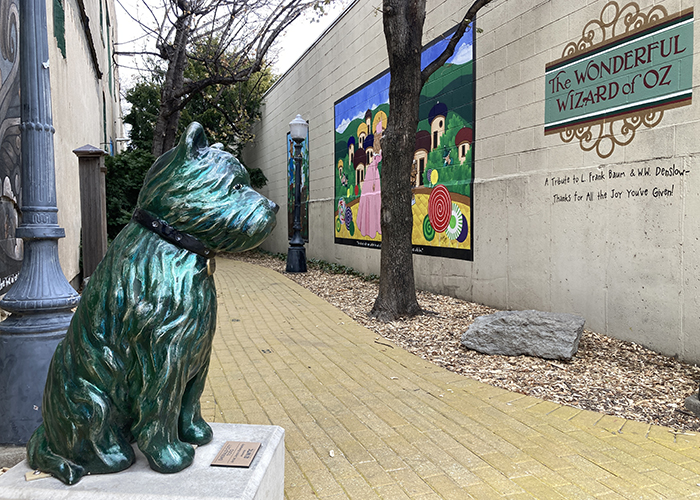 More 2022 Adventures |
Kansas City, MO → Topeka, KS → Omaha, NE 308.0 mi (495.7 km) |
 Next Day |
I’ve a feeling I’m in Kansas, everyone!
I’ve been putting off a Heartland hustle for a few years now: three states, three capitols, and just one national park site. Well, a second was just upgraded in Topeka, so here goes a new adventure beginning at the capitol of the the capital of the Sunflower State! Sunflowers were not blooming on this day, though! It was gray and breezy and really darn cold, so I hustled into the capitol building for a thaw and a cinnamon roll from the Lettuce Feed You Cafe!
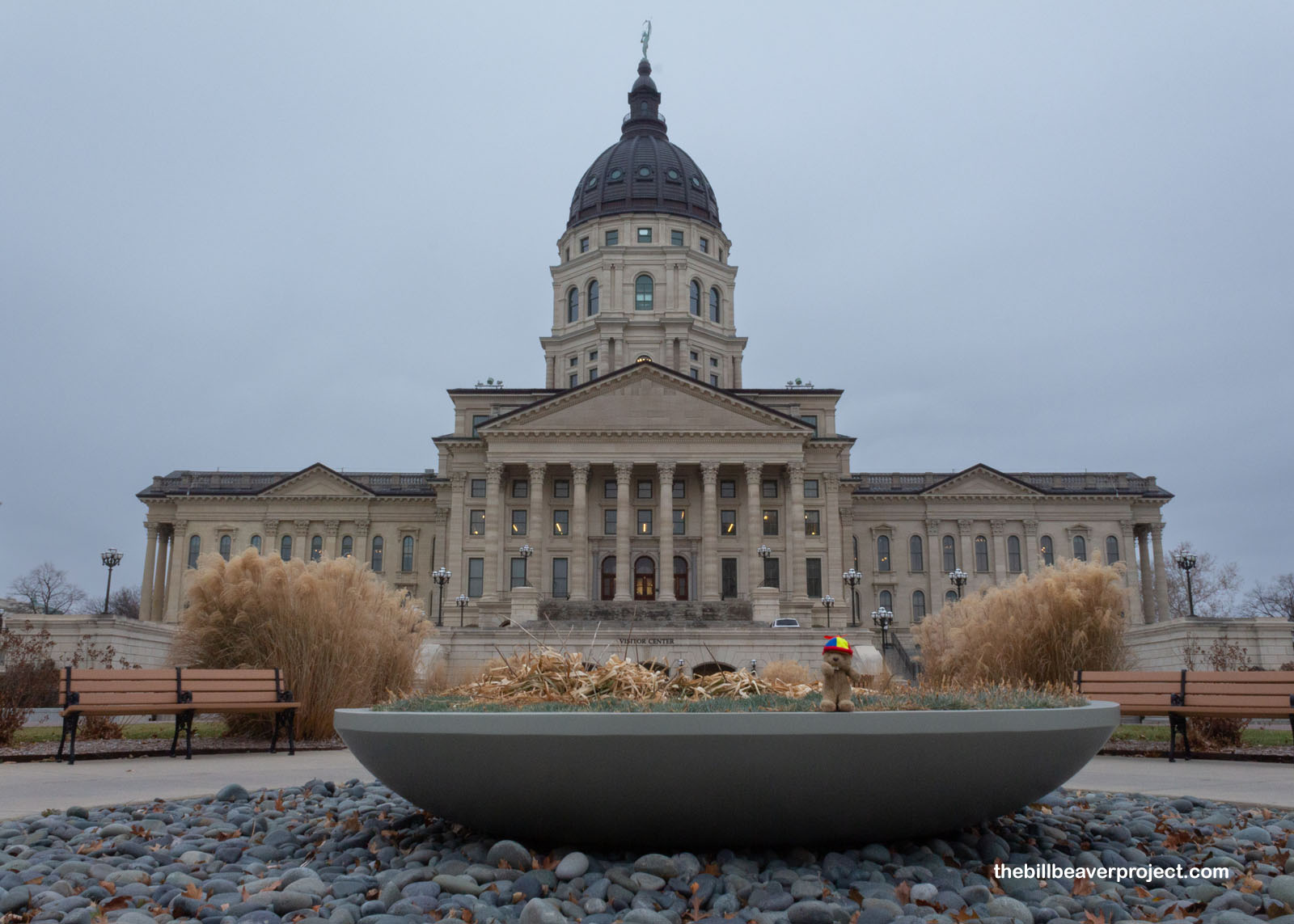 |
The power went out almost as soon as I got in! The whole inside became a dungeon ready for a horror movie monster, but folks kept going about their business, paying it no mind. I went upstairs where the power was working better and got a better glimpse of the insides of this 37-year construction project, designed by E. Townsend Mix! That glimpse included a famous mural by John Steuart Curry, called Tragic Prelude, which depicts the Kansas exploits of abolitionist, John Brown, during the 5-year “Bleeding Kansas” conflicts, which made the Sunflower State slave-free and gave a preview of the upcoming Civil War! This was also before his doomed raid on Harpers Ferry!
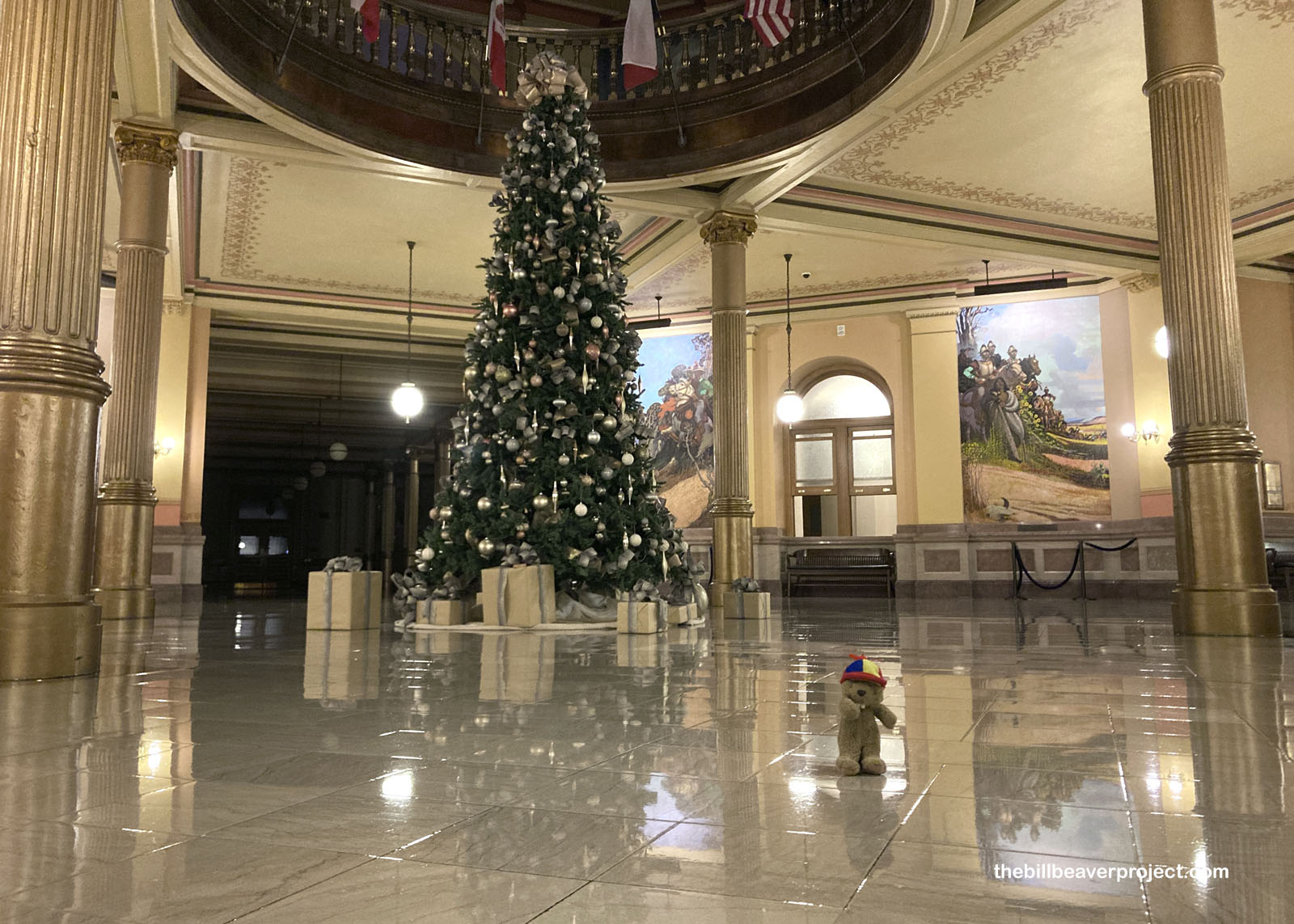 |
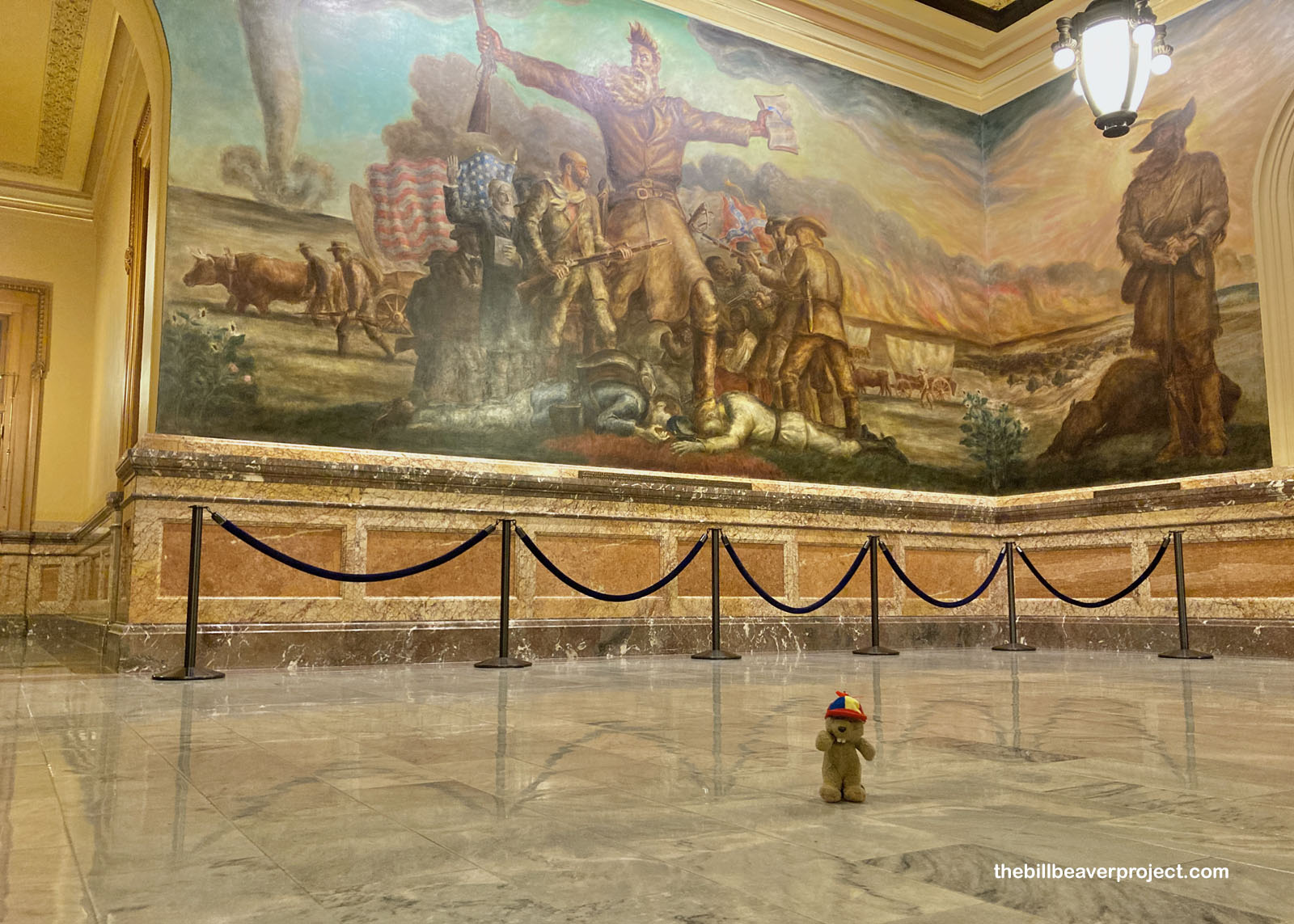 |
Yes folks, once the dust from “Bleeding Kansas” settled, the Sunshine State was admitted to the Union as a free state on January 29, 1861! This made it a great place to set up stations for the Underground Railroad, like my next stop after I’d heated up. That next stop was the home of John and Mary Richie! A Garrisonian abolitionist, Mr. Ritchie believed in an immediate end to slavery by any means necessary. He and his wife had moved here in 1856, set up a home, and participated in Bleeding Kansas battles against pro-slavery forces! After being captured and exiled to Indiana for a while, Mr. Ritchie came back with a vengeance, opening his home as a station on the Underground Railroad, boasting until the end that he’d cost slaveholders more than $100,000!
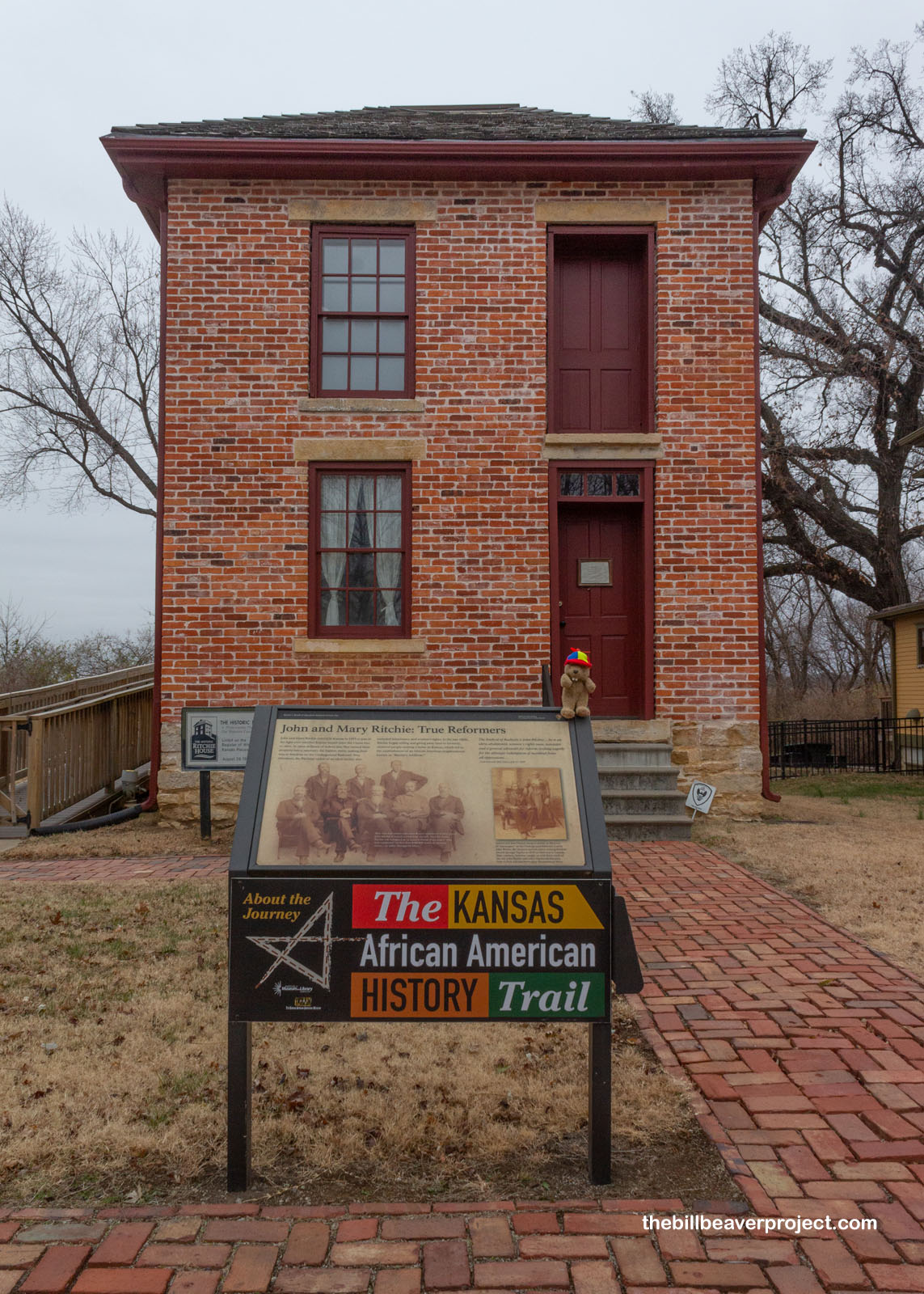 |
With that as its background, it made sense that Kansas would continue to hit important milestones in the fight against slavery and discrimination! A mural down the street from the Ritchie Home, organized by Michael Toombs, celebrates victories across the world with the faces of giants from Dr. King to Gandhi, and the words “And the Children Shall Lead!”
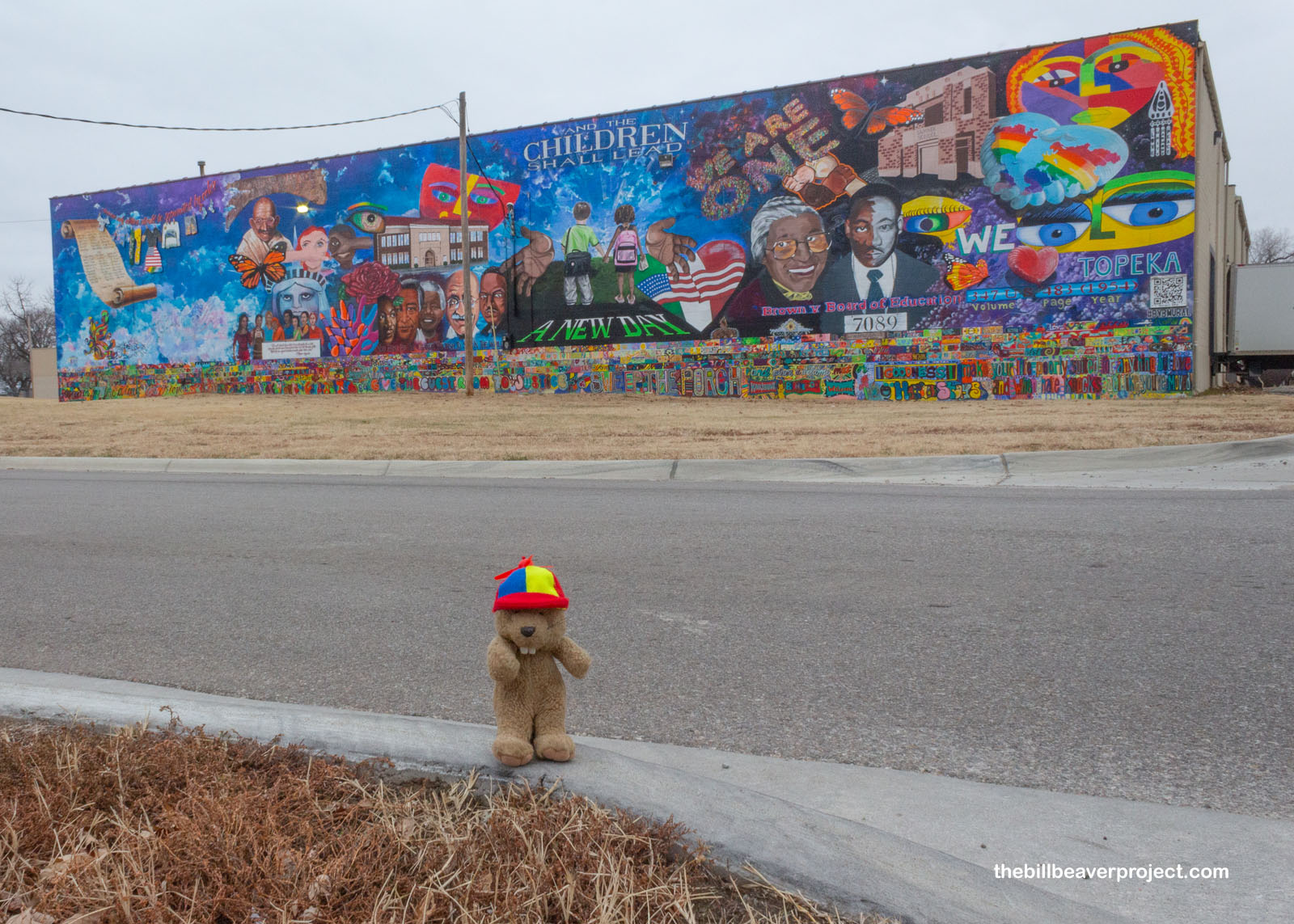 |
Importantly, this mural is across the street from Brown v. Board of Education National Historical Park, freshly upgraded from a National Historic Site! Centered around the Monroe Elementary School, this park tells the story of how discrimination in education got struck down on May 17, 1954! The lead plaintiff in the case, Oliver Brown, tried to enroll his daughter, Linda, in a much closer school to where they lived, but because it was an all-white school, her enrollment was declined. With the help of NAACP lawyer, Thurgood Marshall, and 13 more plaintiffs (Oliver Brown et al.), this case made it all the way to the Supreme Court with national repercussions!
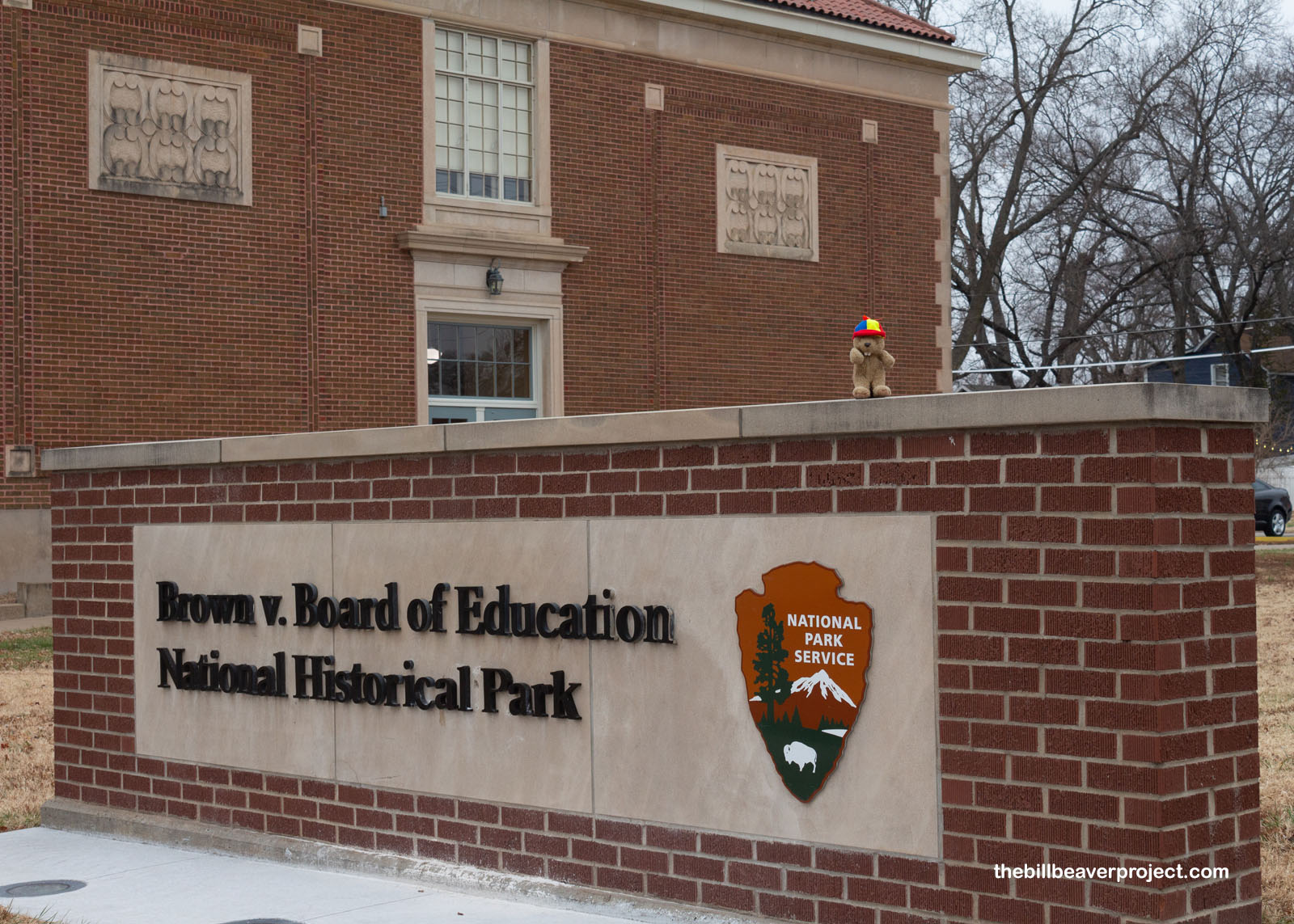 |
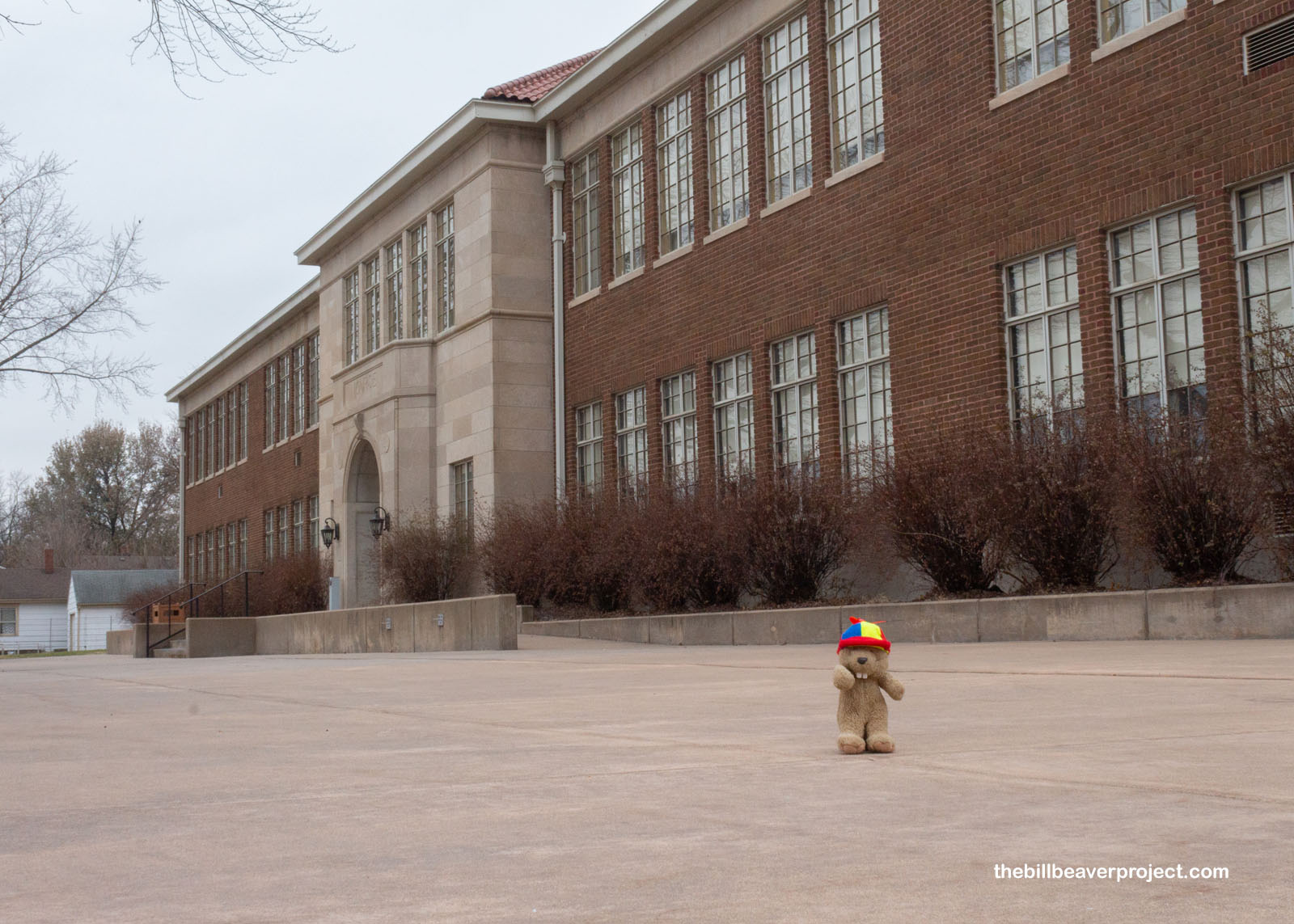 |
The historical park is mostly interpretive now, but water fountains are still in the halls. It not only tells the big picture of the anti-segregation movement across the US, but also talks about the lives of the teachers here. See, it was scary enough for the students entering freshly integrated classrooms for the first time, but teachers didn’t get the same protections offered by the Brown decision! It wasn’t until the ’60s that the ball really got rolling on integrating faculty!
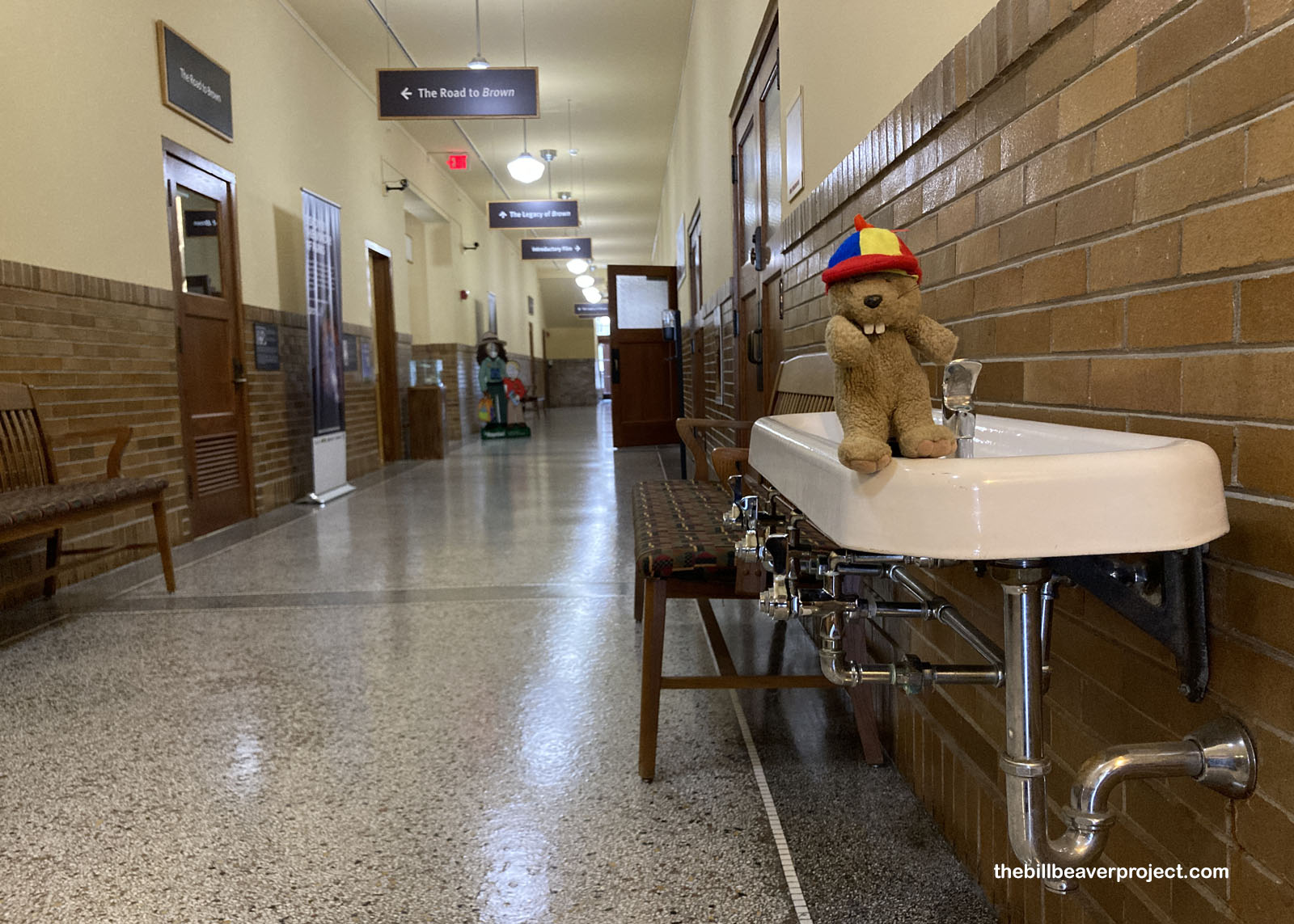 |
But the preserved Monroe Elementary also talked about the importance of kindergarten as a gateway to education. In fact, the kindergarten room is the only one preserved to look the way it had in the ’50s! Topeka had been home to the first Black kindergarten west of the Mississippi circa 1893, and the tradition continued of making sure kids of all backgrounds had the kindergarten experience in school! I couldn’t help but notice, though, that these kids didn’t have much access to books with characters that looked like them, something Drs. Kenneth and Mamie Clark pointed out with their famous doll experiments, showing the psychological impacts of segregation on kids!
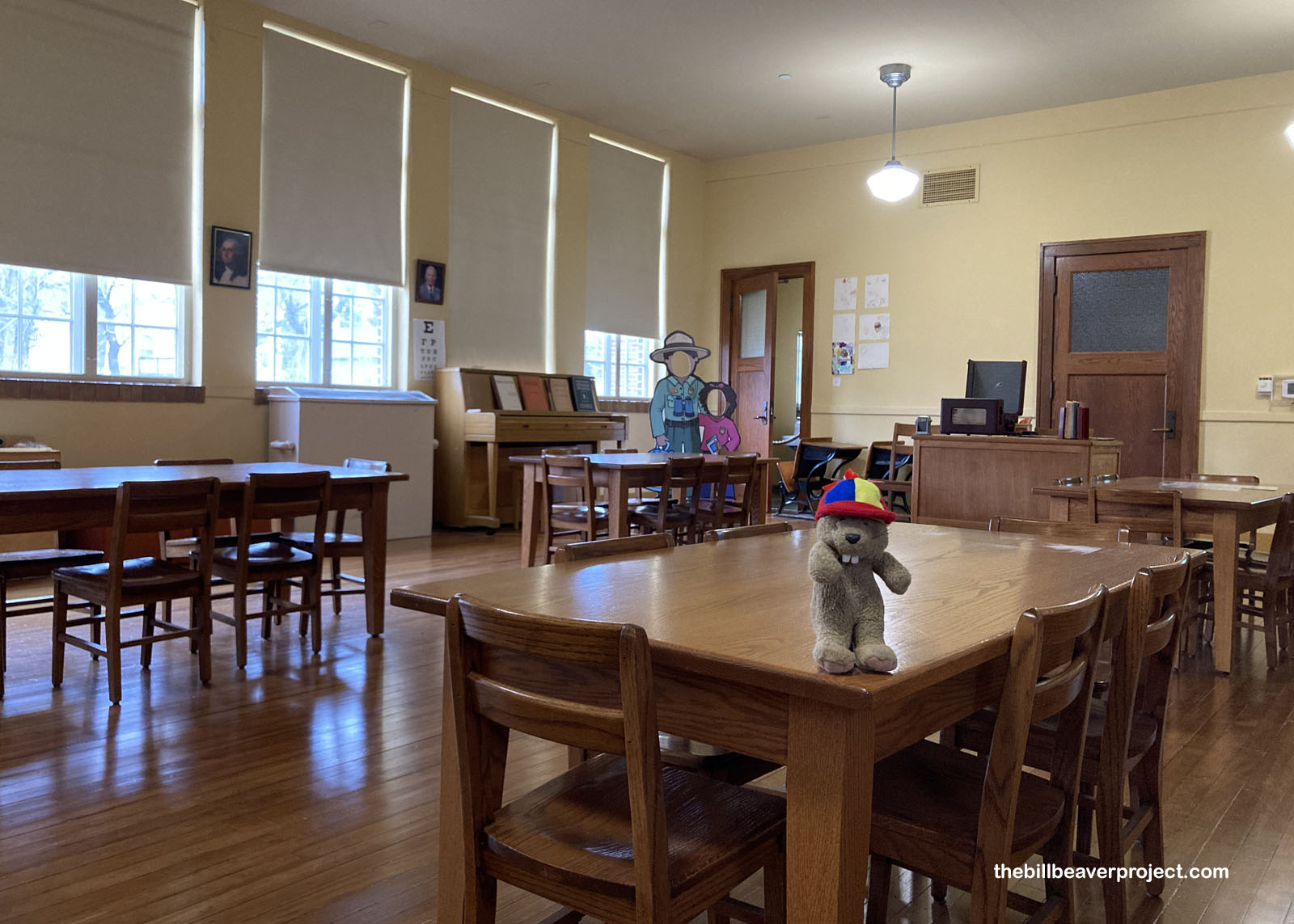 |
In any case, the case that out an end to those kids’ segregation began in court here in this building! The Post Office and Court House was the result of the Public Buildings Act of May 25, 1926, which authorized $100 million to be spent on government buildings outside the nation’s capital. This one was dedicated on August 20, 1934 and held its first hearing in the Brown case in 1951!
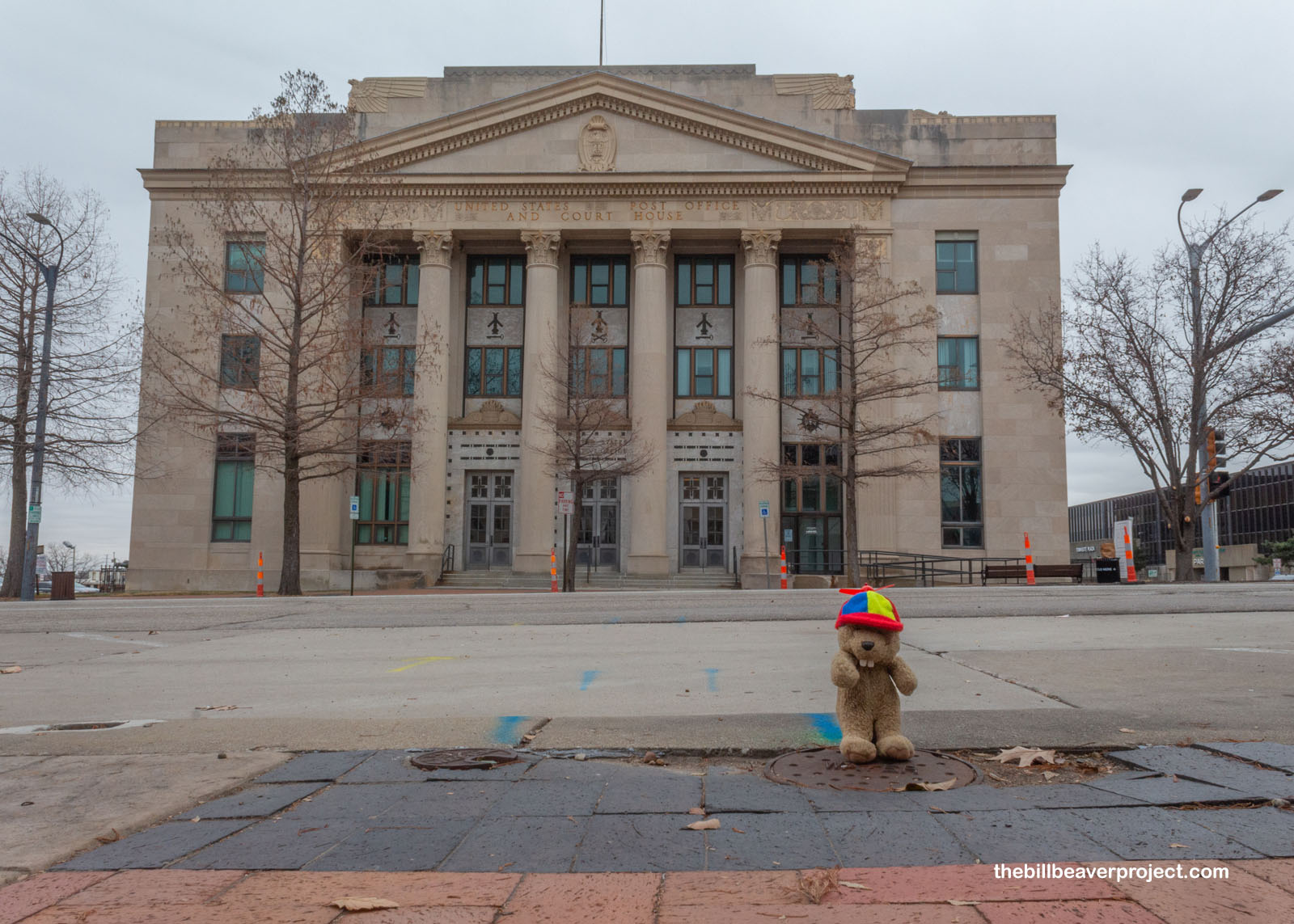 |
But I, like Dorothy, had had enough sepia tones for the morning. You may recall that Kansas’ next claim to fame is a portal that leads over the rainbow! I could think of nowhere better to illustrate my adventurous transition than the Equality House in the west side of town!
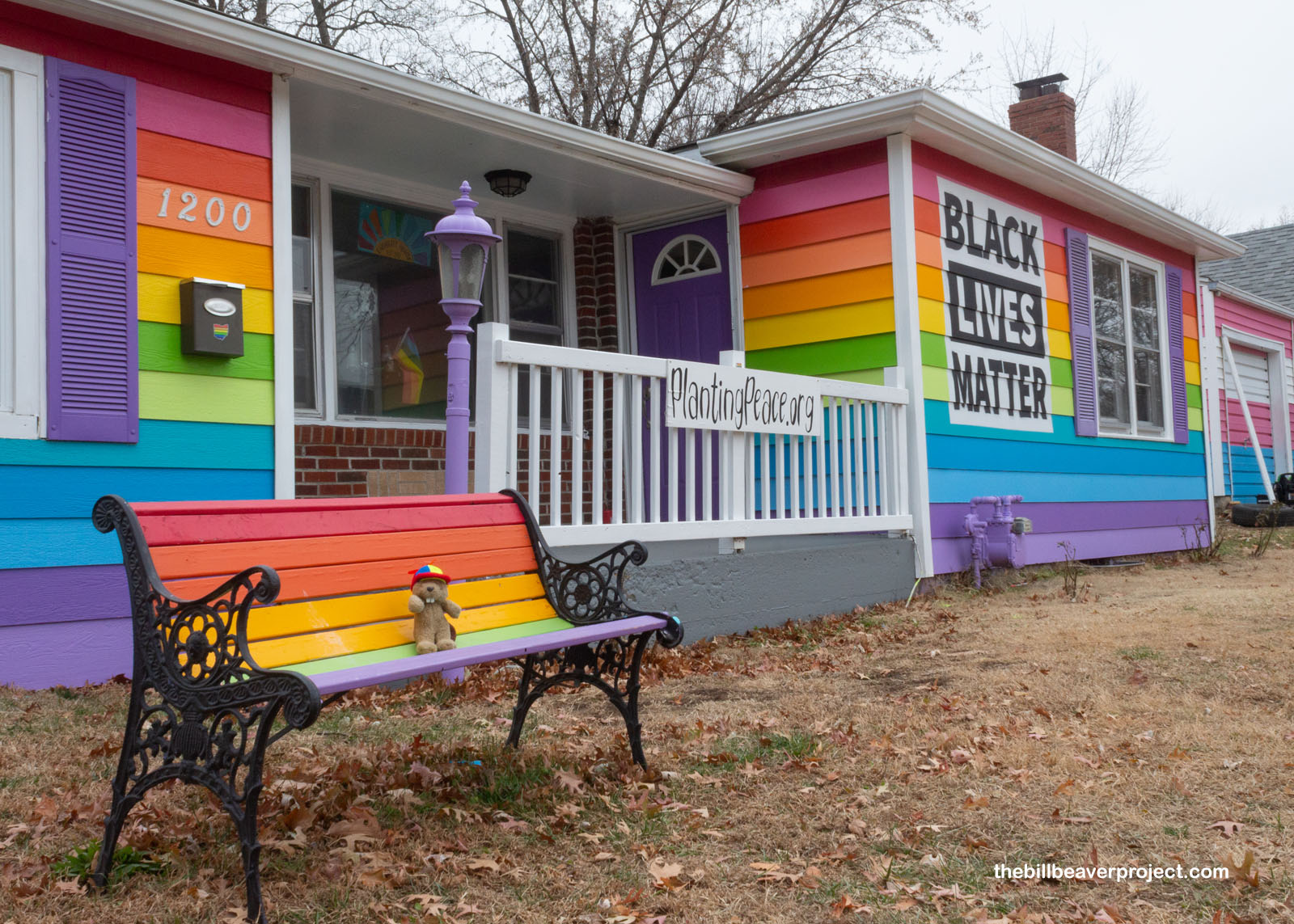 |
Located directly across from the horrific Westboro Baptist Church (I mean, I was really shocked at their anti-gay banners), the Equality House, by contrast, serves up a multicolored message of love, acceptance, and affirmation! What it lacked in the walls, cameras, warnings, and banners of its infamous funeral-protesting neighbor, the Equality House made up for in pure good vibes! It’s run by a nice organization called Planting Peace. You could check them out!
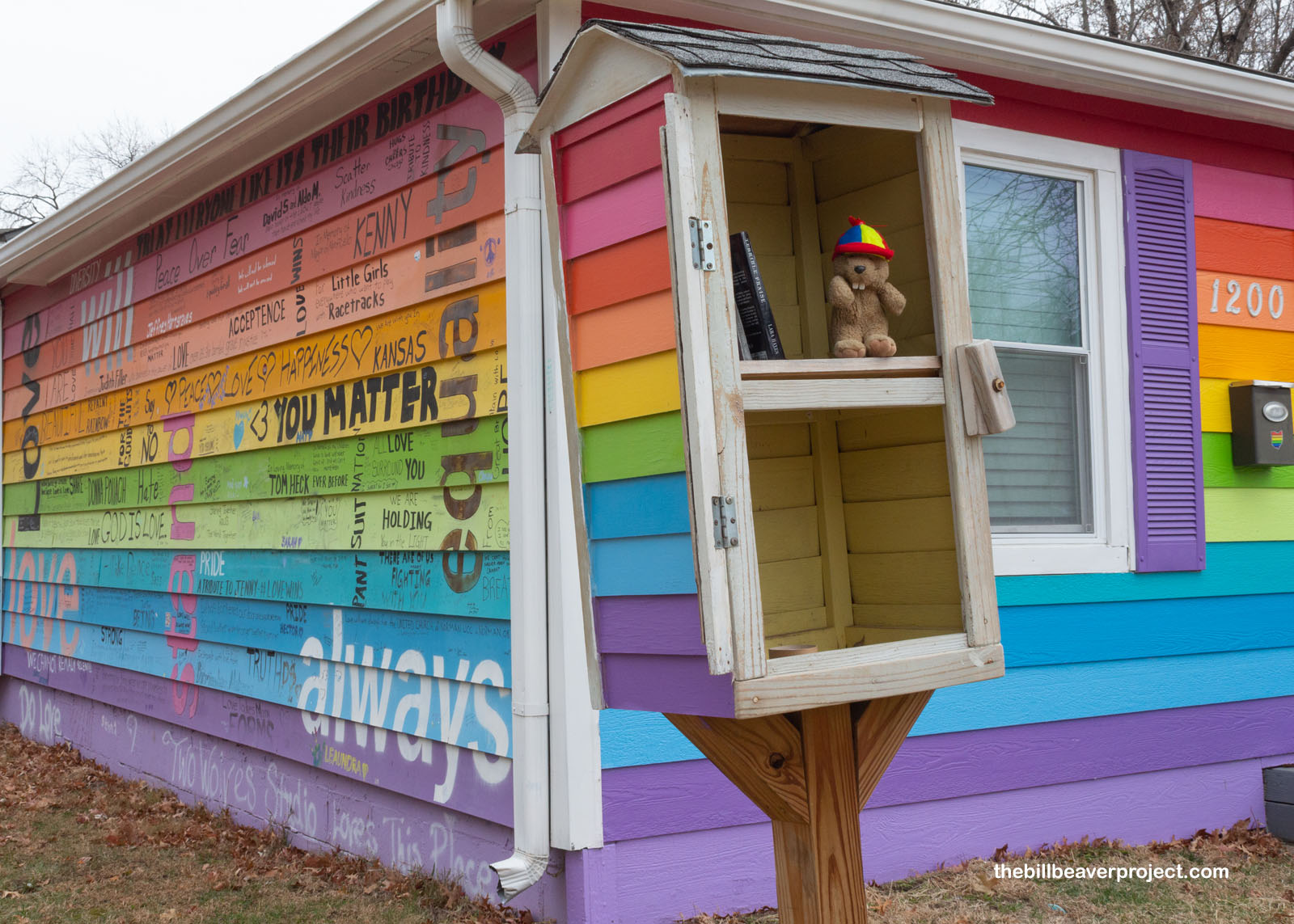 |
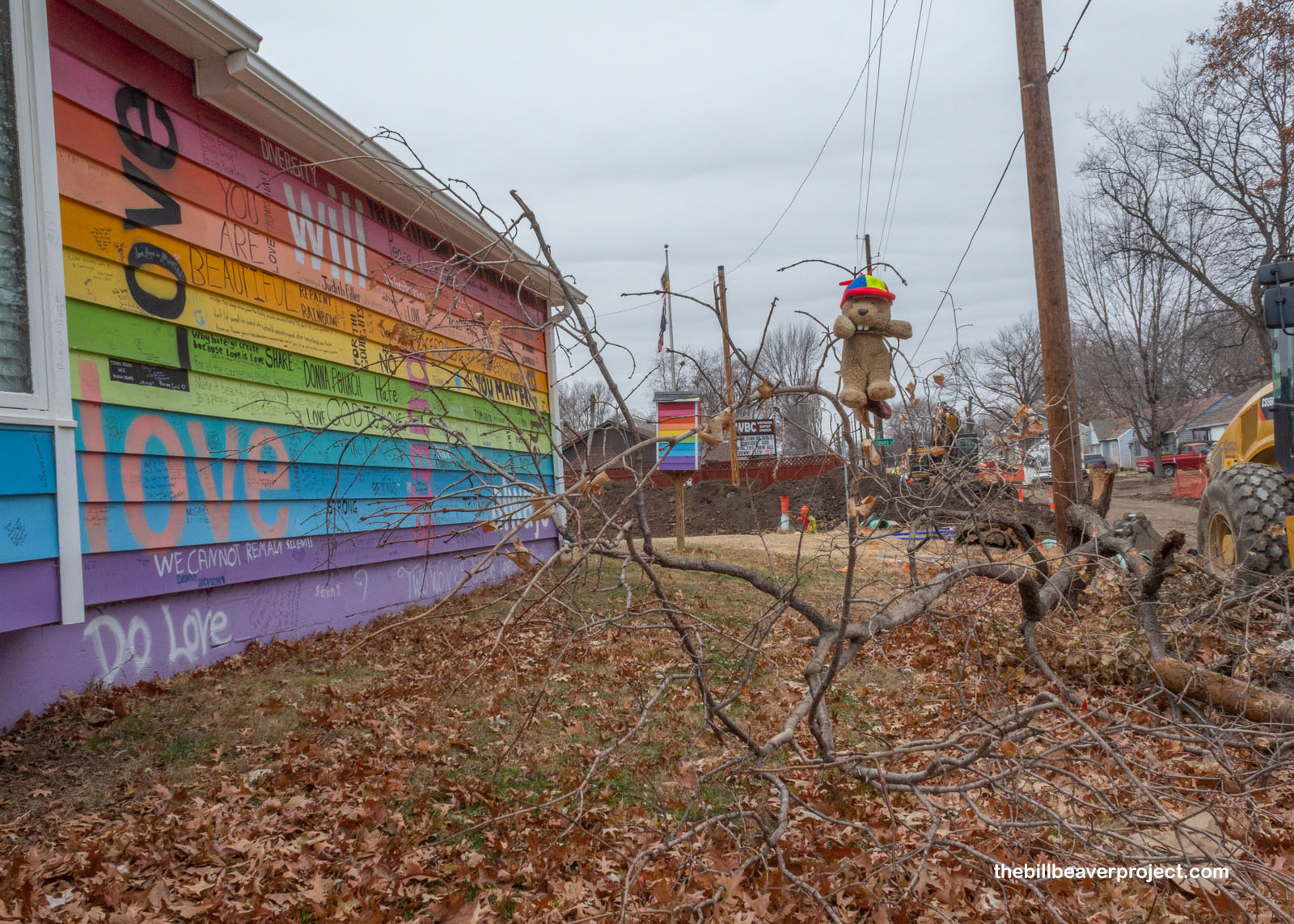 |
And then, as though caught up in a whirlwind, I found myself 40 miles to the northwest in the town of Wamego, also known as the end of the Yellow Brick Road!
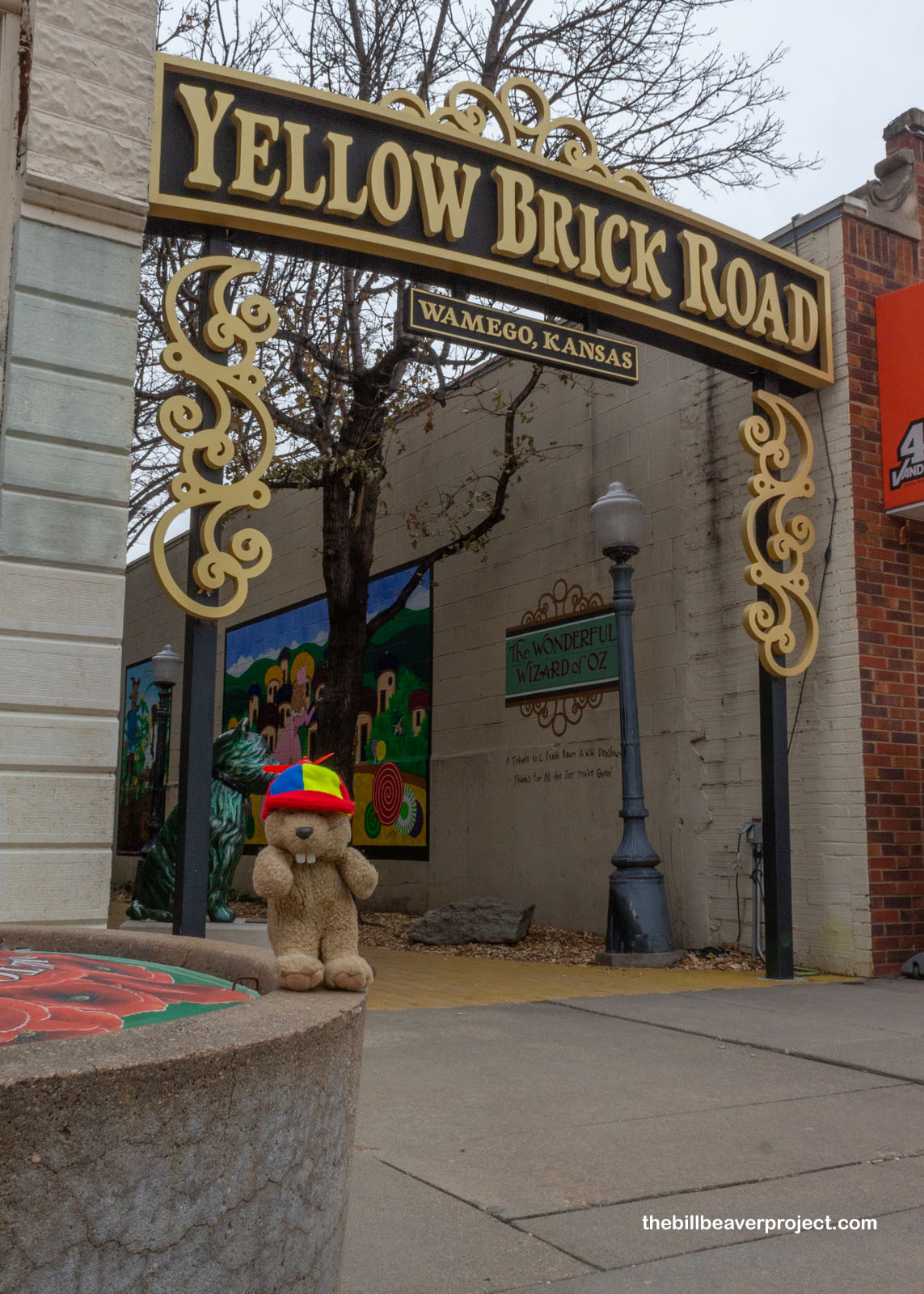 |
Previously, Wamego was known as the birthplace of Walter Chrysler, of automotive fame, but in 2003, a new Oz Museum opened up, first housing the collection of Todd Machin, and then, after that loan period was up, the much larger collection of a Franciscan monk named Johnpaul Cafiero! Since then, the town has embraced all things Oz, because after all, Dorothy’s hometown was never named, so why not put it here?
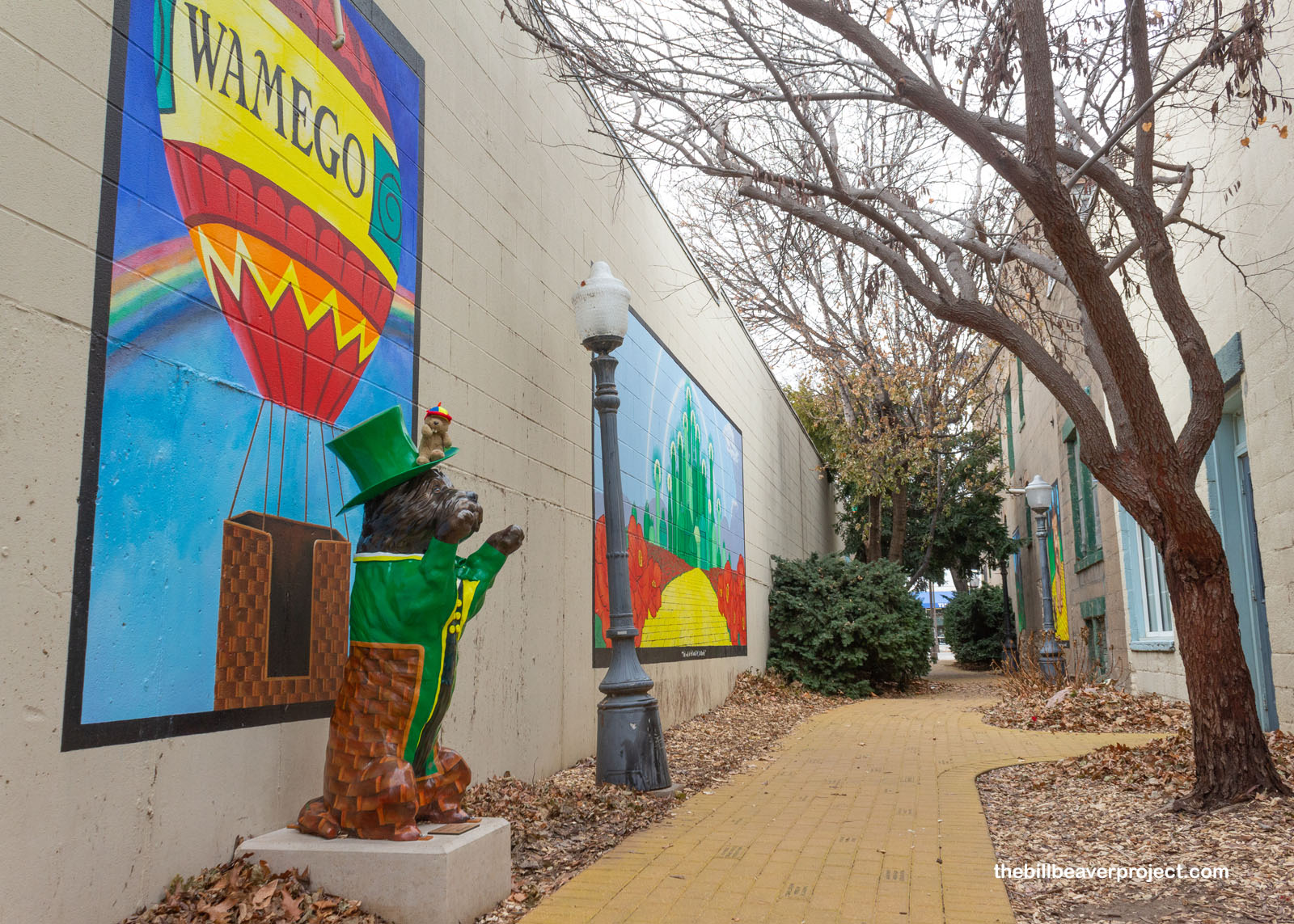 |
And when I say “embraced,” I really mean it! Apart from the Oz Winery and annual Oztoberfest, the whole town is full of artistic Totos, 18 in Toto total! It was very much like Punxsutawney’s groundhogs!
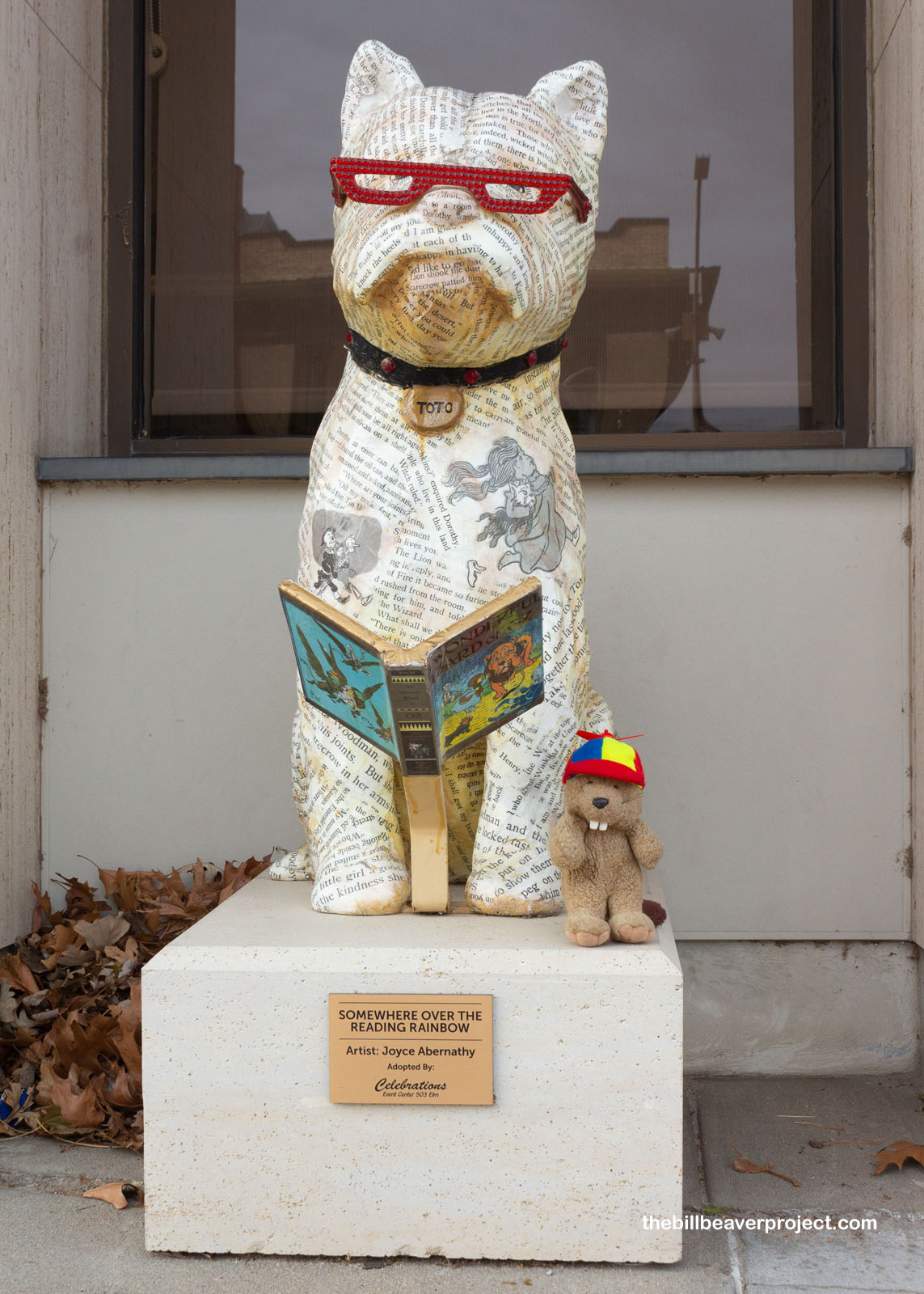 |
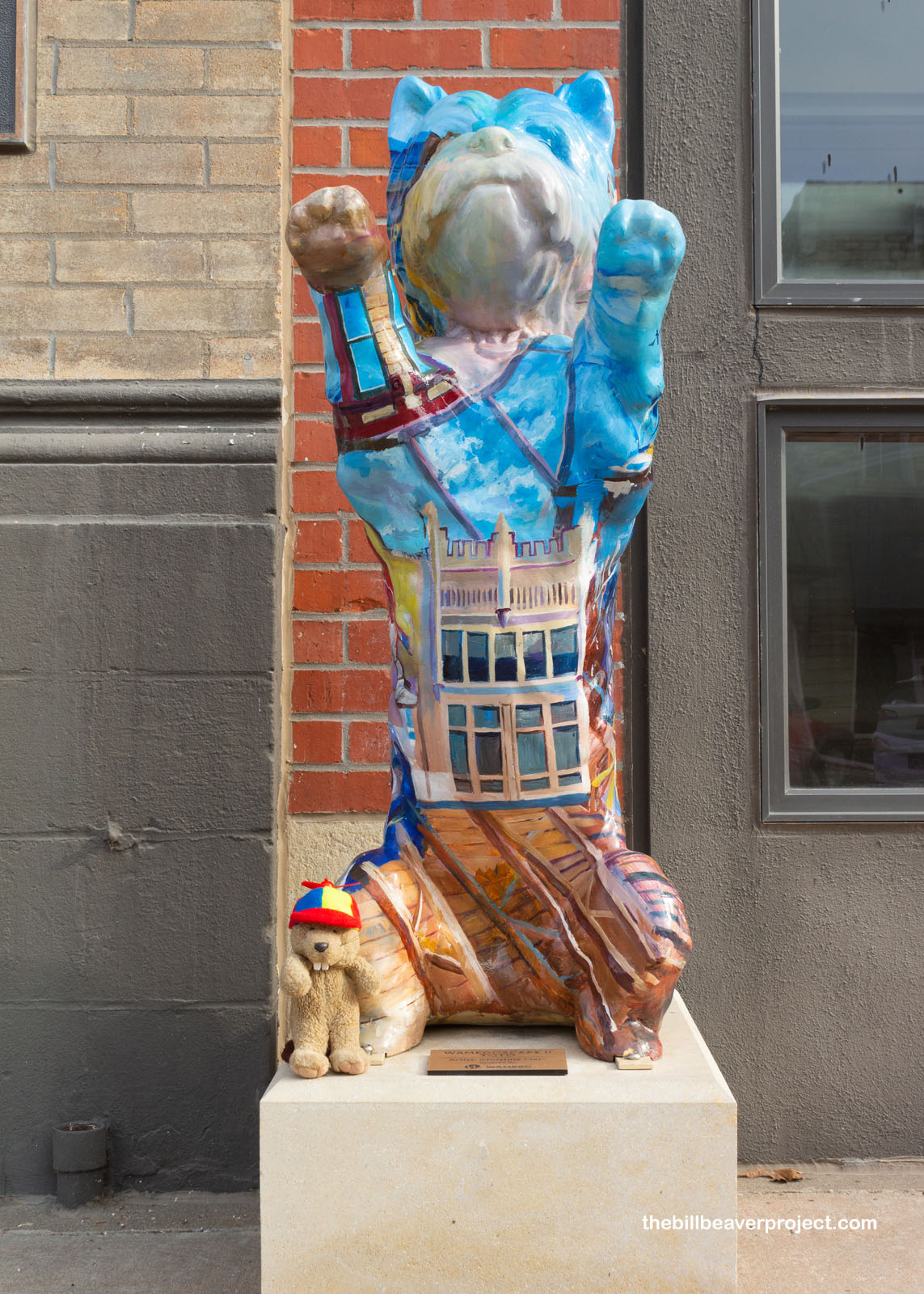 |
But enough wandering around town! It was time to enter the emerald museum itself, to see what I could see and learn what I could learn about the most-watched movie of all time, plus the 17 books that inspired it!
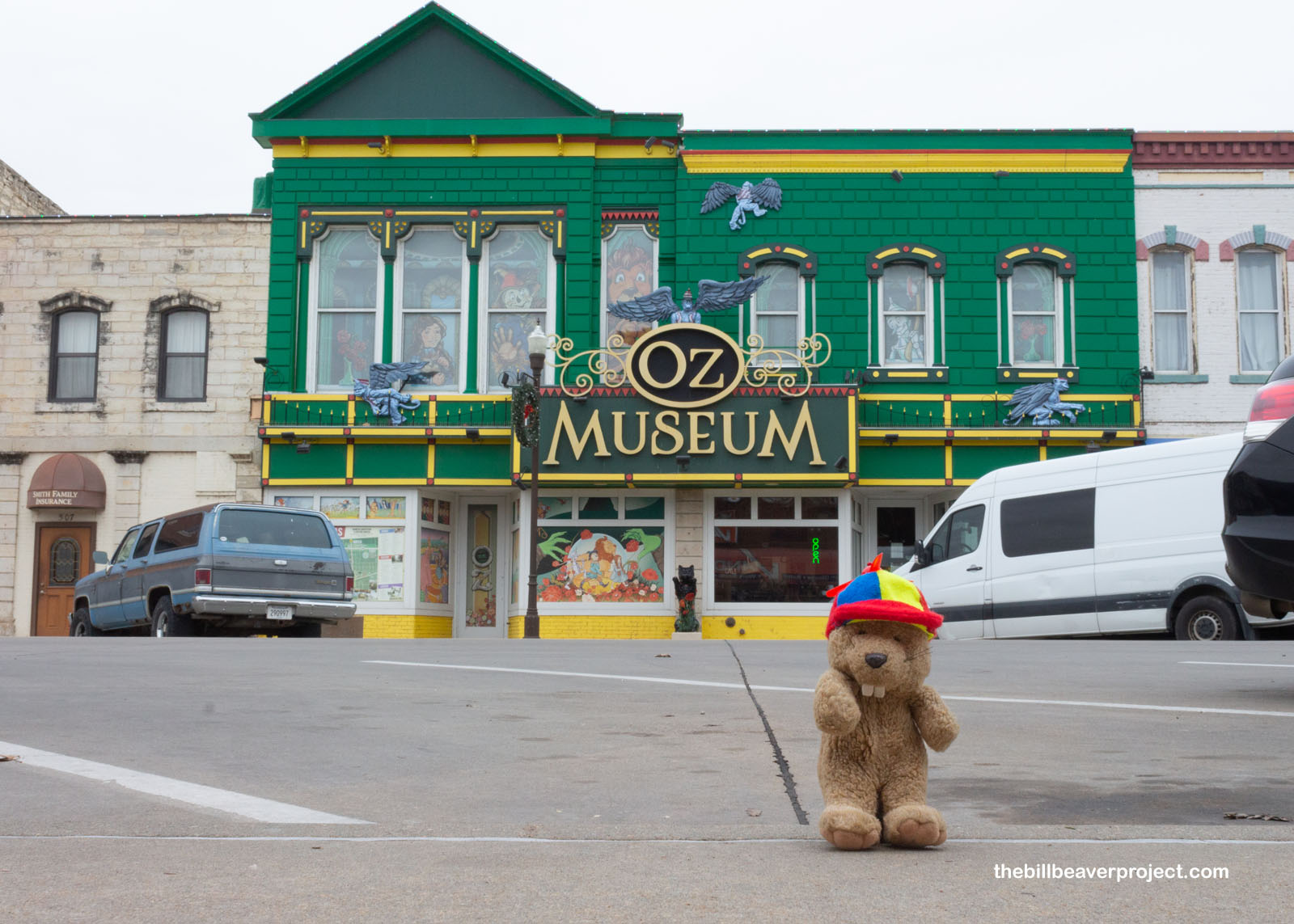 |
Of course, there was plenty to learn about Dorothy, who was named after L. Frank Baum’s little niece, who sadly died as a baby. The circle of exhibits spotlighted the most famous portrayal of Dorothy by Judy Garland, whose Minnesota birth certificate and several pairs of ruby slippers were on display! There were plenty of odes to Toto, who was also famously portrayed by Terry the terrier, and who made $75 more per week during filming than any of the Munchkins! That was because these mostly European actors had a sketchy manager, named Leo Singer, who, shall we say, shorted them!
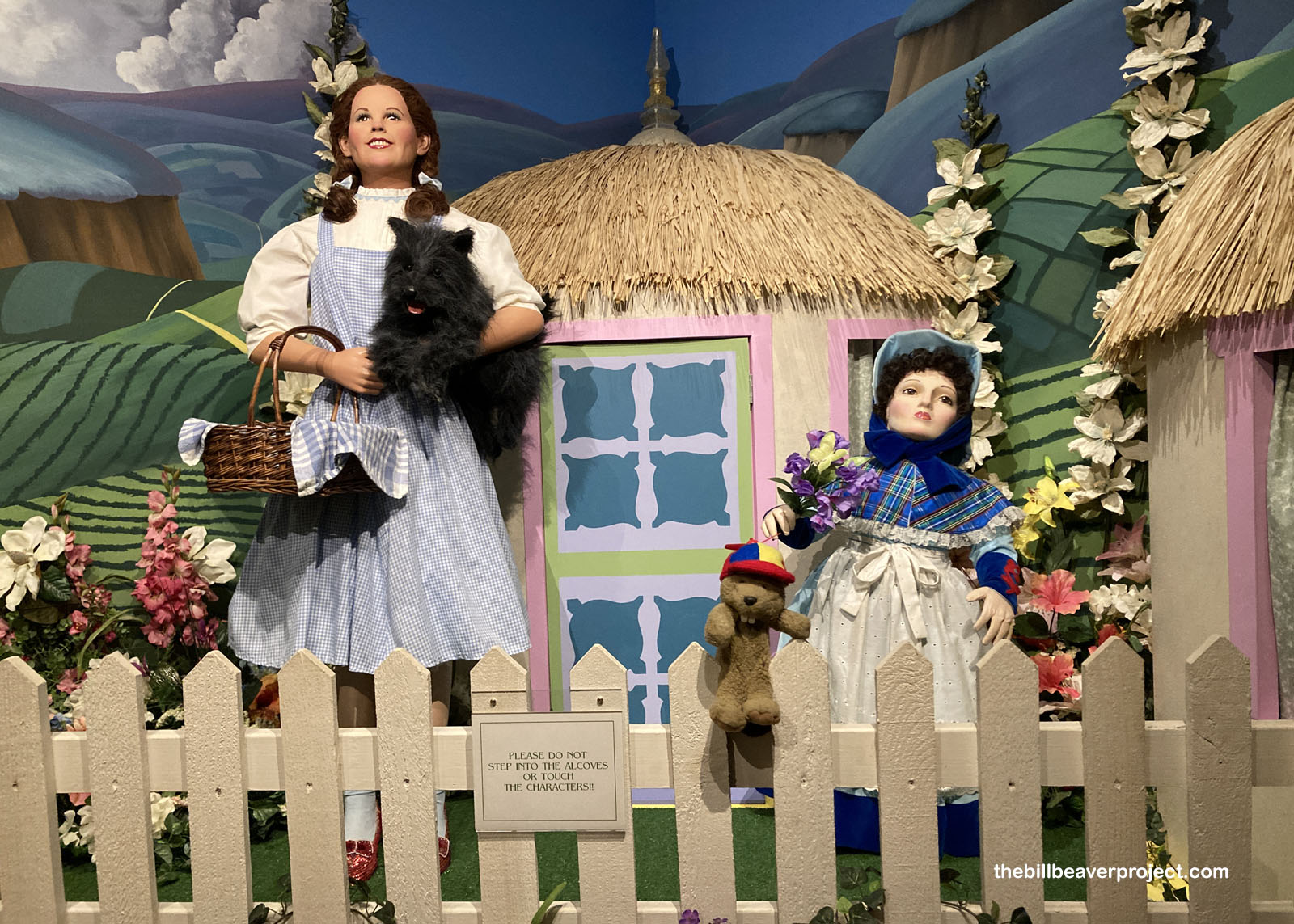 |
There was some mixup with the Scarecrow and the Tin-Man too! Ray Bolger was cast as the Tin-Man, but wanted to play the Scarecrow instead. So the studio let him switch roles with Buddy Ebsen, only to find that Mr. Ebsen was severely allergic to the aluminum dust of the Tin-Man’s makeup! He was then replaced by Jack Haley, who would go on to complete the iconic part, and whose son, Jack Haley, Jr. married Judy Garland’s daughter, Liza! The characters, who represented farm workers and industrial workers in the first book, each had their own sequels: in The Scarecrow of Oz, the titular character leads a coup, and in The Tin Woodman of Oz, the Tin-Man sets off to find the desire to match his new heart!
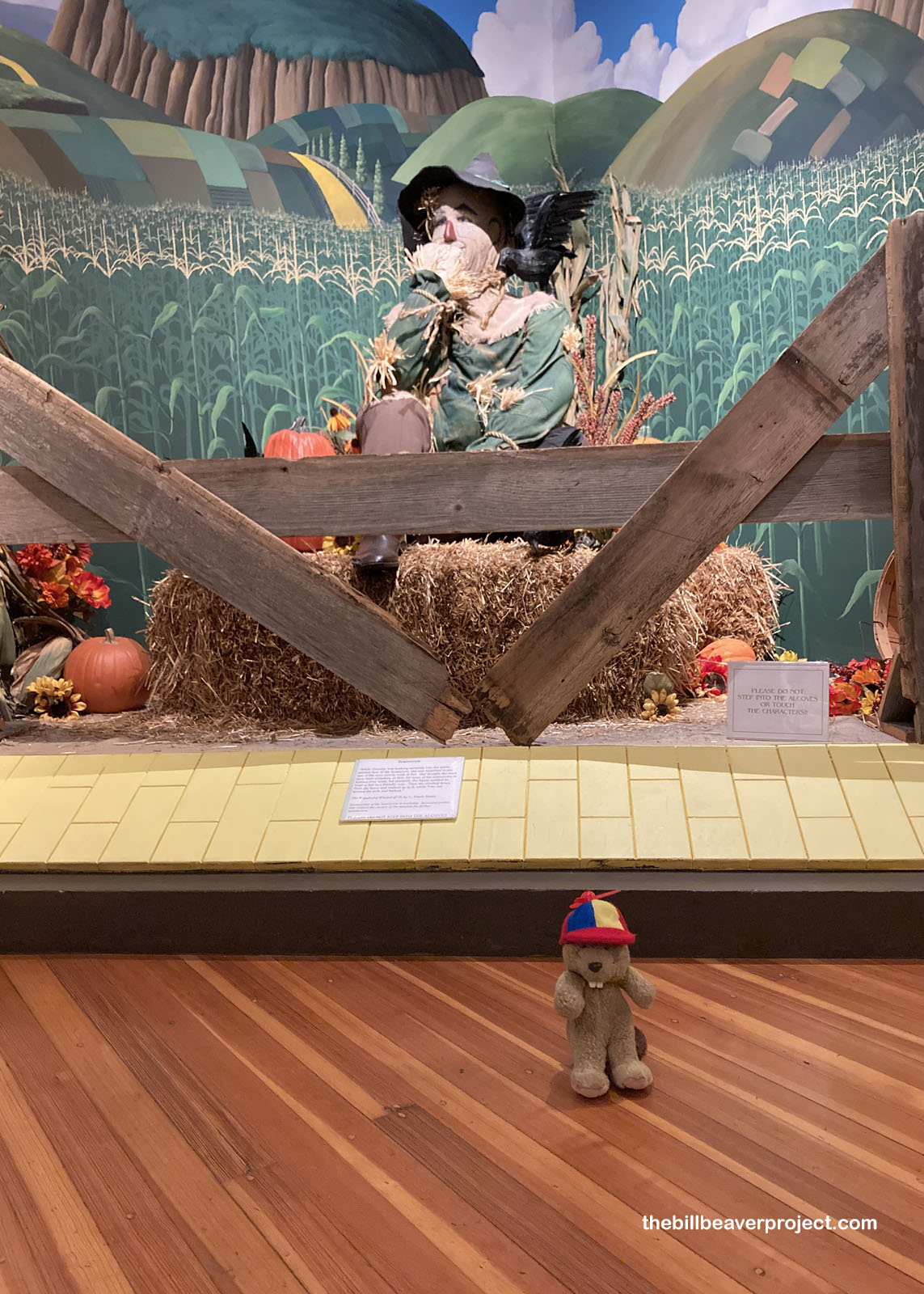 |
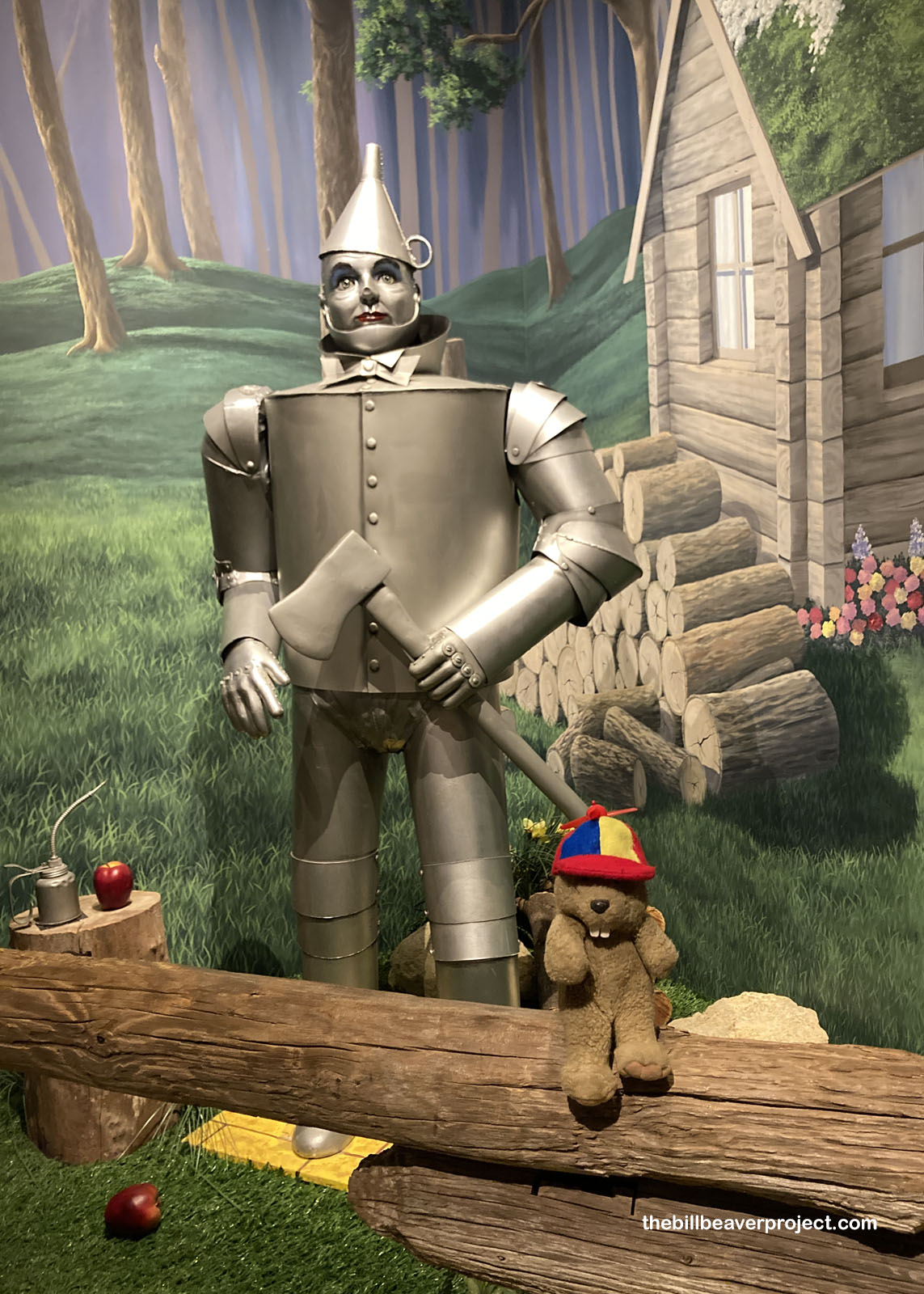 |
Only the Cowardly Lion never had the bravery to face his own sequel, but there was lots to learn about the King of the Forest! Actor, Bert Lahr, had to wear over 100 pounds of stuffing inside his costume, made from real lion skin! It required two people to dry it every day, because the lights made it so hot on set, and boy did that stink! The studio had originally wanted a real MGM lion in the role, but that was canceled, likely because they needed a tenor but the lion could only hit bass!
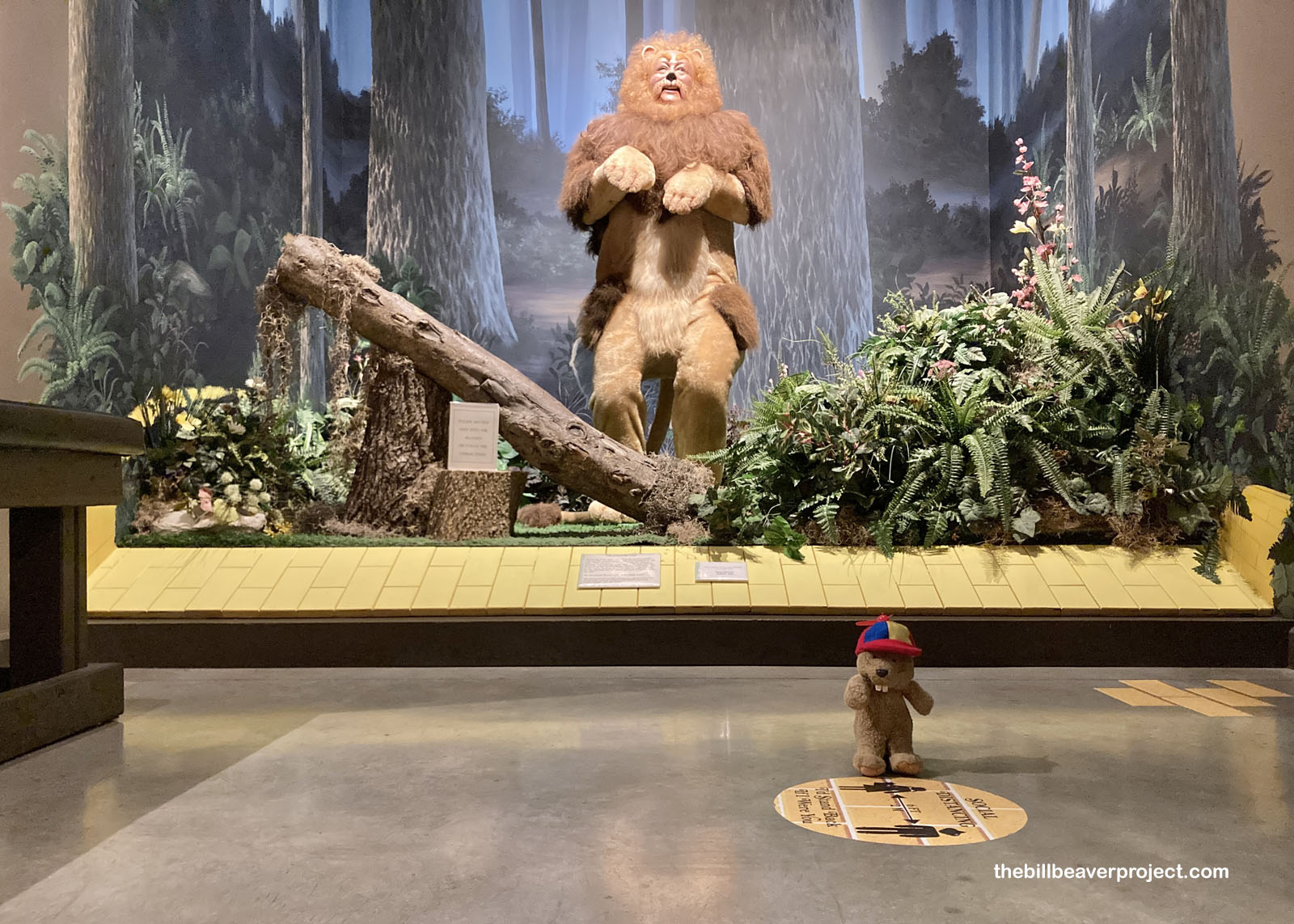 |
And then there was Margaret Hamilton’s iconic Wicked Witch of the West! A kindergarten teacher turned actor, Ms. Hamilton had a rough ride to become one of film history’s top villains! Both she and her stunt double, Betty Danko, got severely burned during filming, Ms. Hamilton by pyrotechnics in Munchkinland, and Ms. Danko by the smoking pipe during the “Surrender Dorothy” scene! But, they both came up from the ashes!
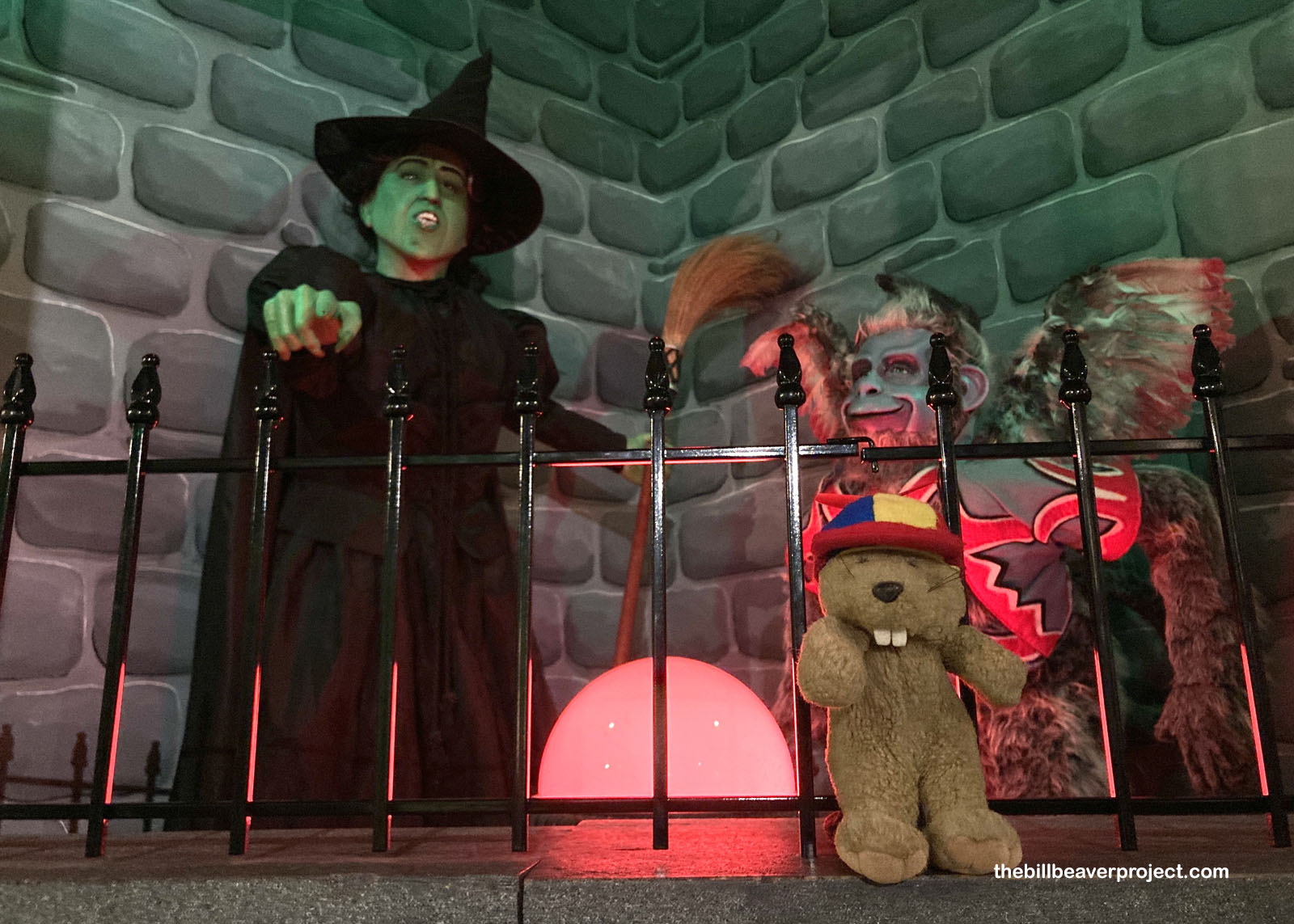 |
Believe it or not, all of this came out of the work of a former breeder of fancy chickens, whose experience of the gray plains came from a failed endeavor owning a shop in South Dakota, not Kansas, all the while living with his mother-in-law, suffragist and Native rights activist, Matilda Joslyn Gage! 122 years since its publication, Oz is now in the public domain with dozens of adaptations for the page, stage, and screen and a place firmly in the hearts of folks from around the world!
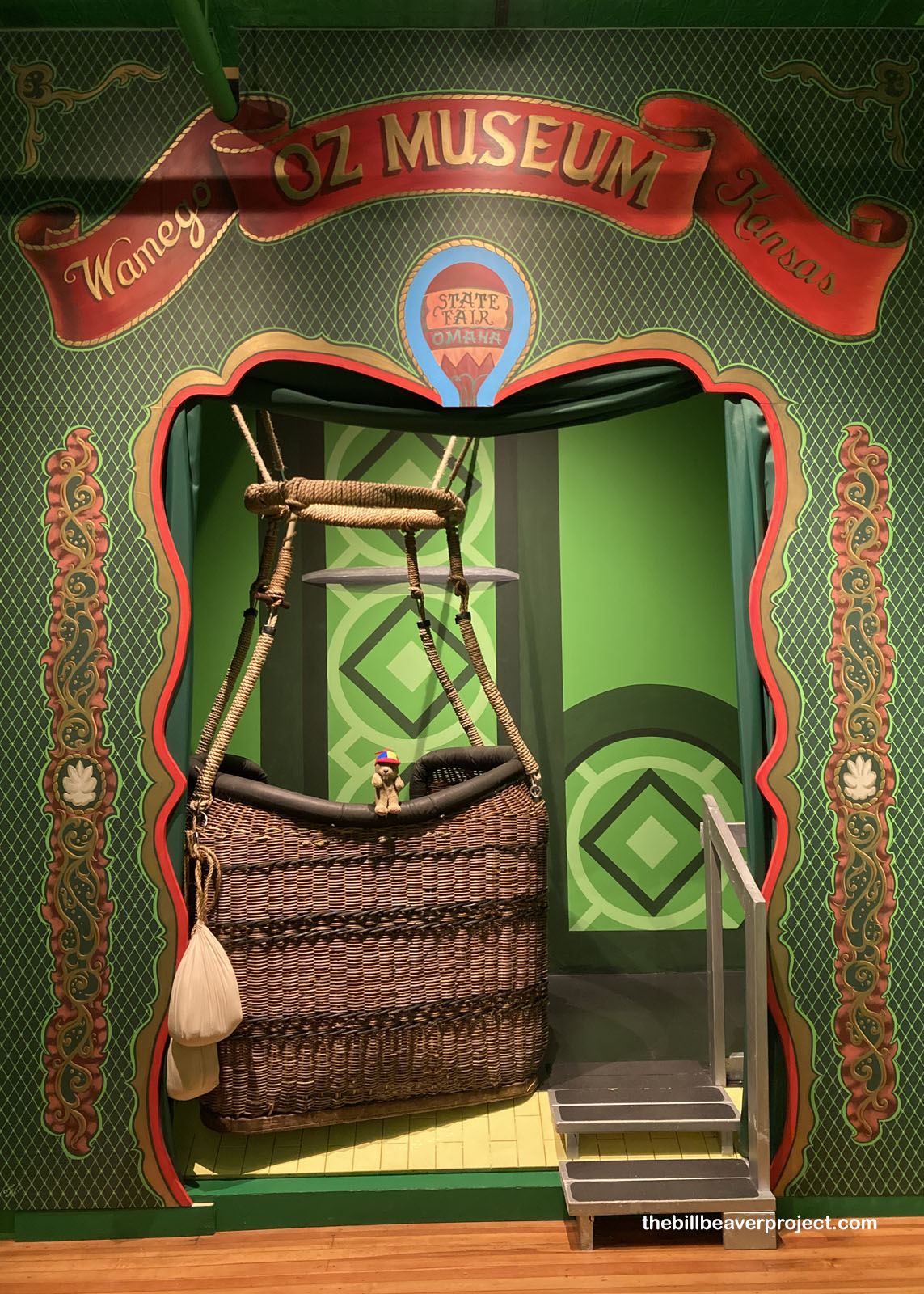 |
After this look back on a fantastical past, it was time to reconnect with real world history for the conclusion of today’s wanderings! At this time of year, the best way to blend reality and fantasy is to take in the Christmas decorations already up in cities across the States! In all the ways the morning’s mural was a Tragic Prelude, this scene was a truly hopeful prelude!
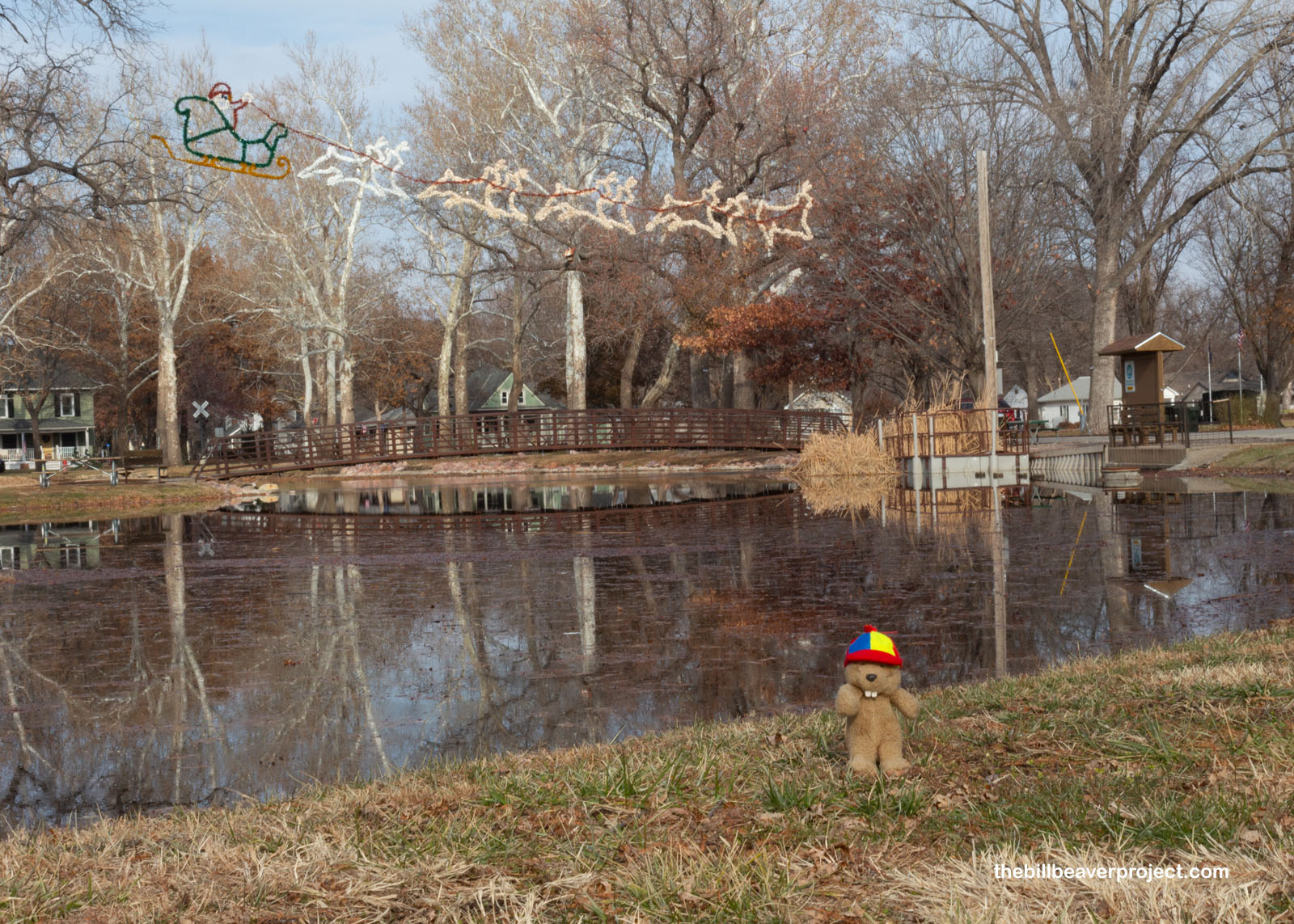 |
That’s because my next stop was very watery and full of hope! Alcove Spring Park and Independence Crossing are deeply ingrained in the folklore of the Oregon and California Trails!
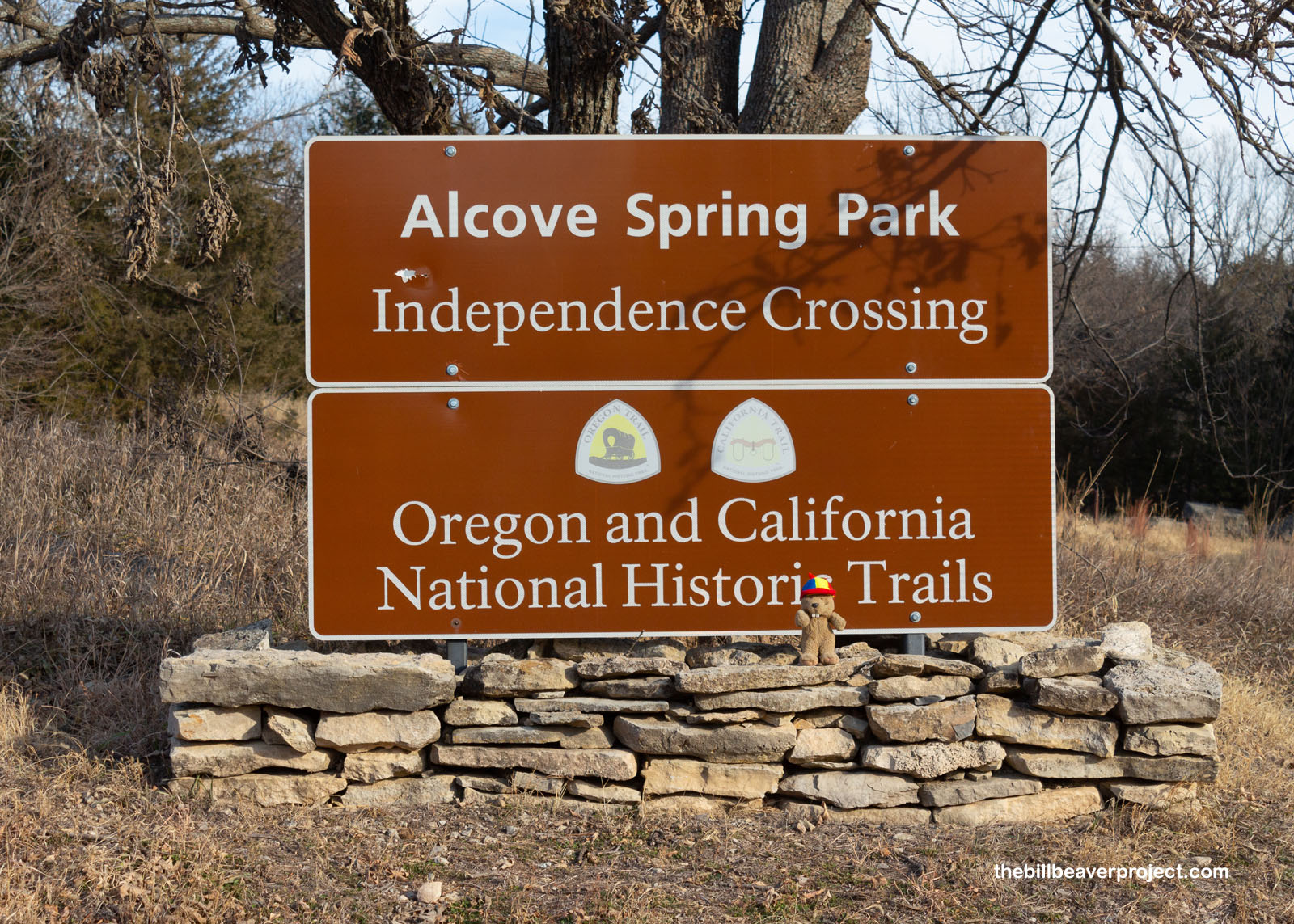 |
With the old ruts of wagons still barely visible, this site was like a westbound waiting room, a place where up to a hundred wagons would gather and wait for the others to cross the Big Blue River, one at a time.
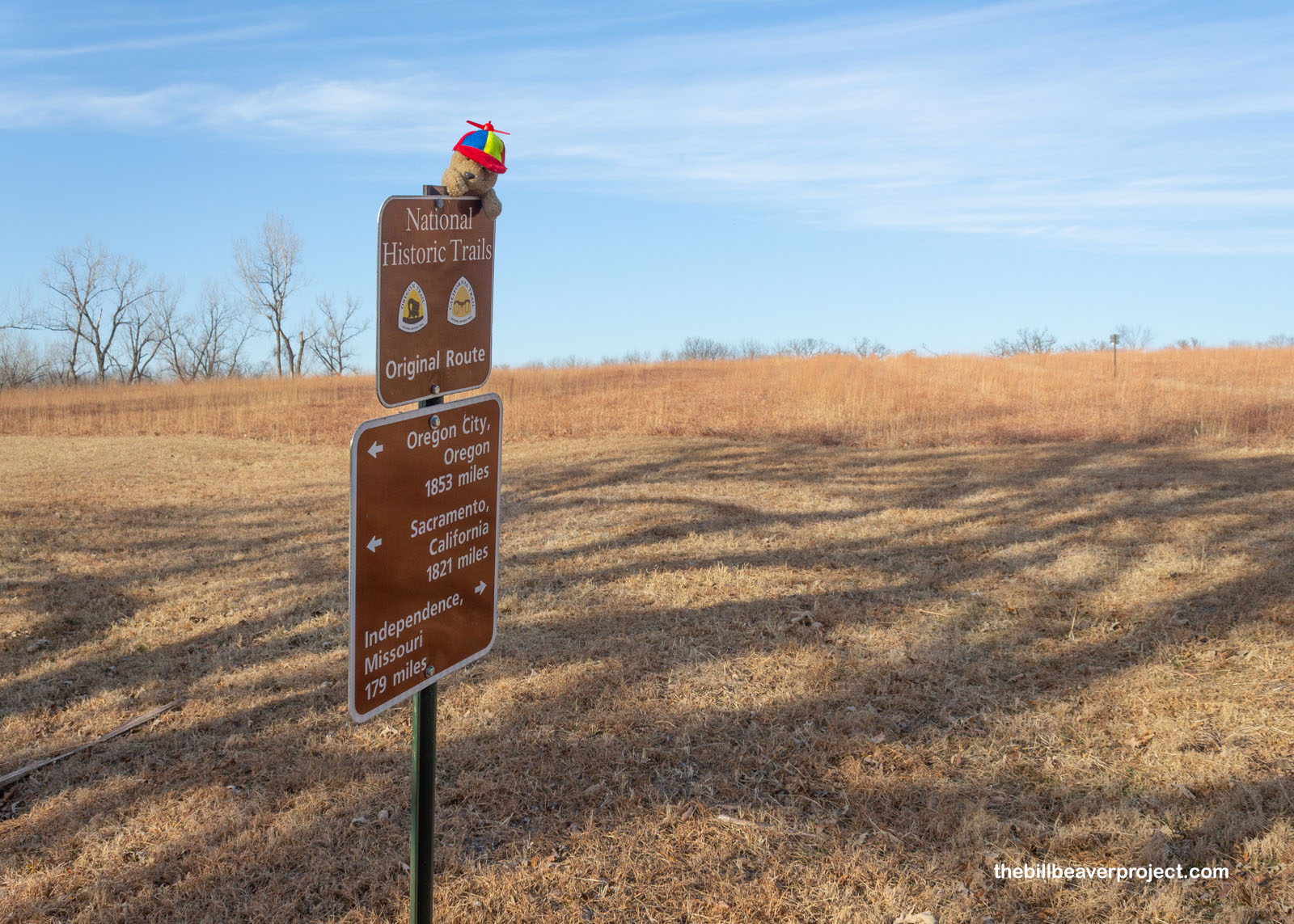 |
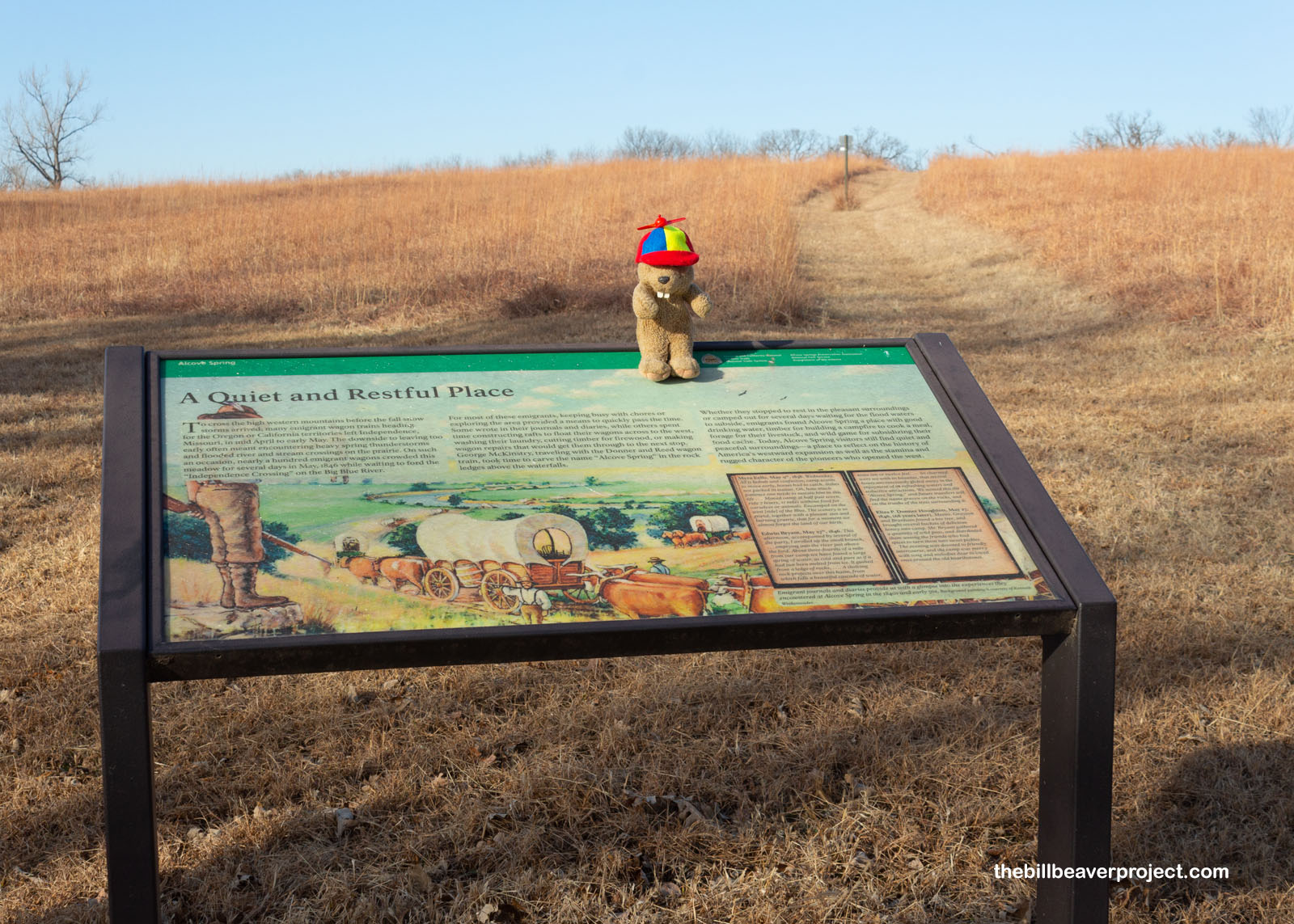 |
At 165 miles from Independence, Missouri, this was the fifth river that westbound pioneers had to cross on their journey to Oregon or California. Getting across a river meant crafting rafts and floating the wagons across, which took a lot of waiting. Here, in 1843, one group encountered a Caw battle party returning from war with the Pawnees, and here in 1846 the Donner-Reed Party had its first casualty! Terminally ill Sarah Keyes vowed to use what time she had left to see her son one last time, but she never made it to his new home in Oregon. She was buried here at this resting place.
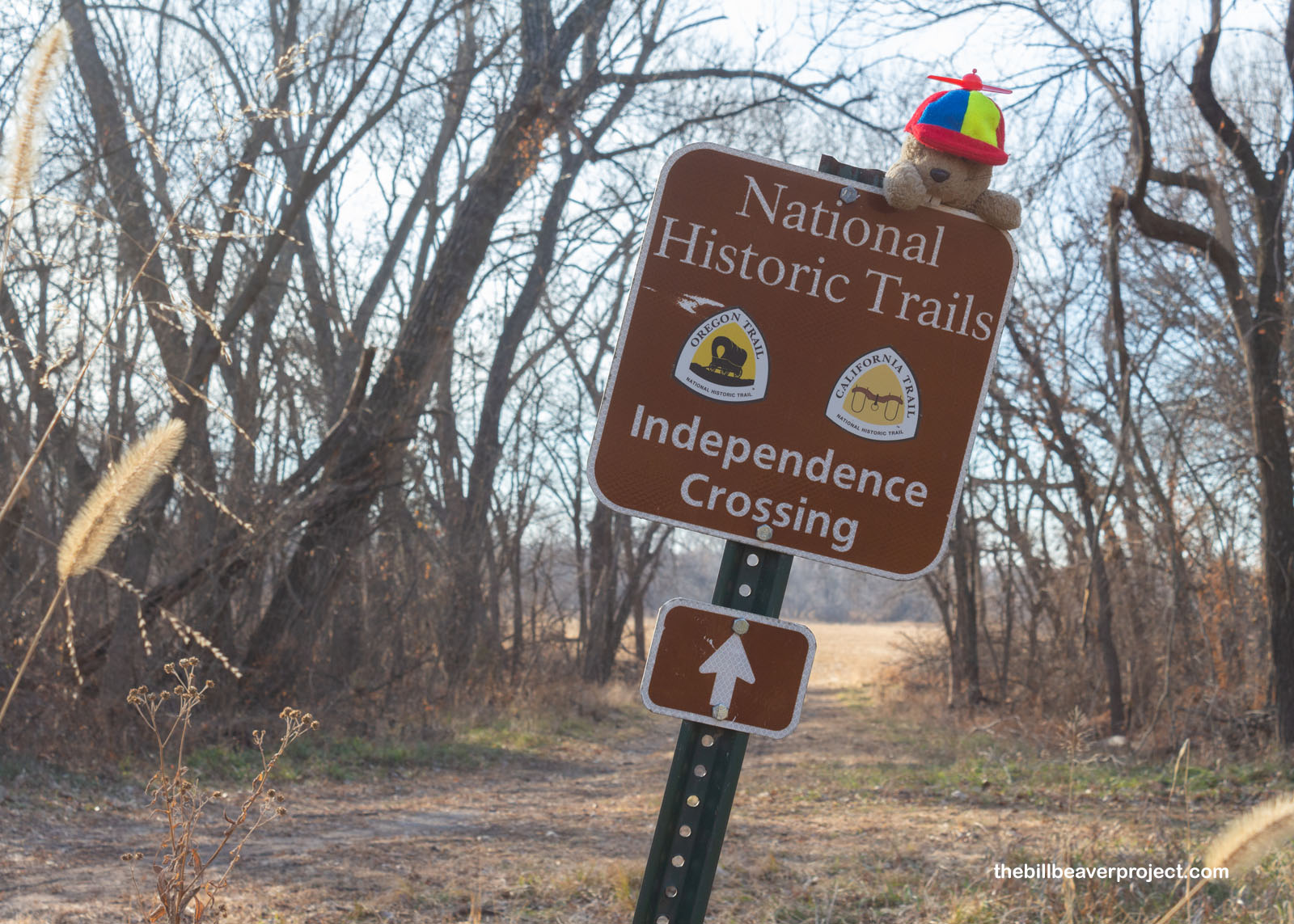 |
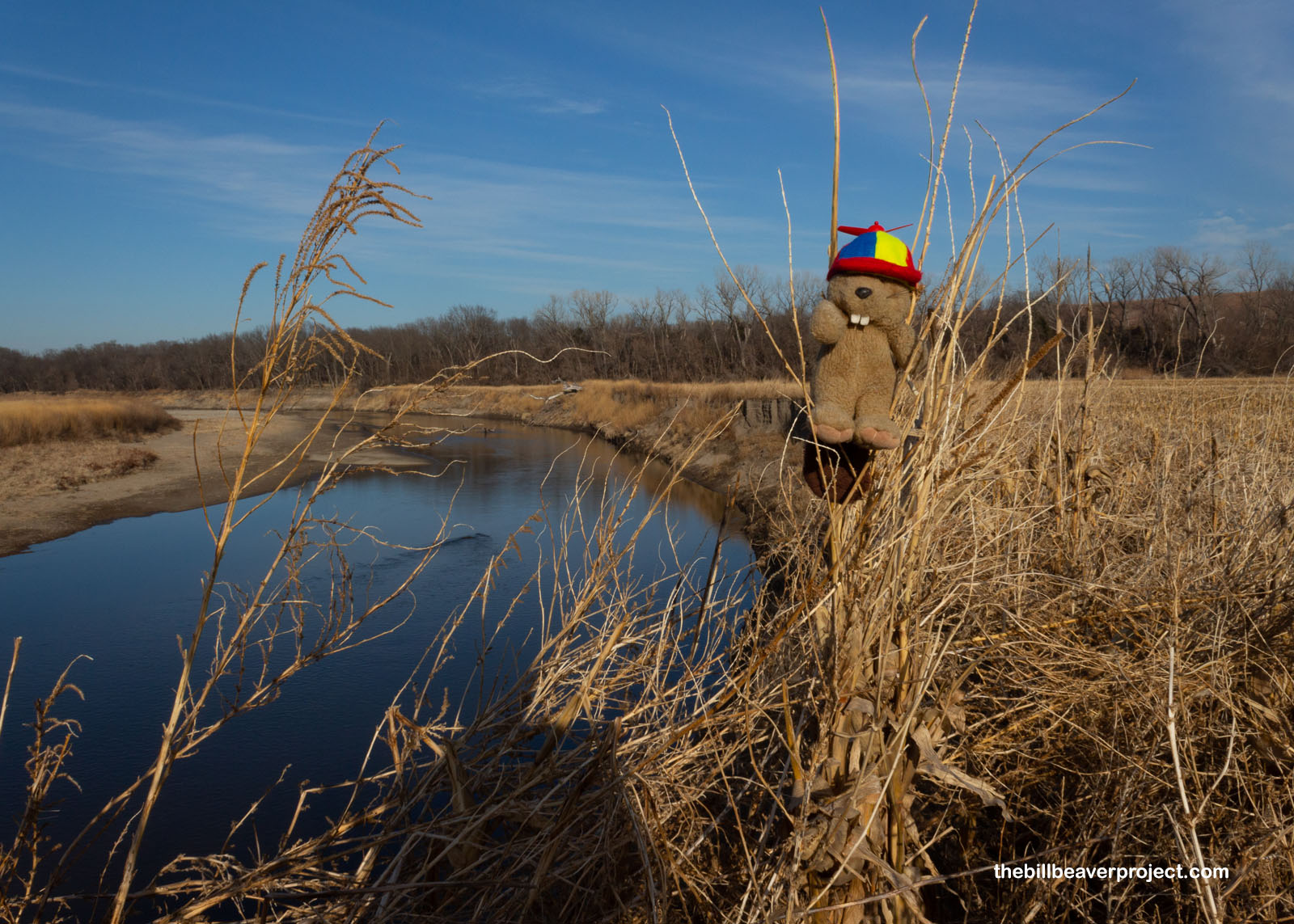 |
Though Mrs. Keyes didn’t have much time on her journey, waiting for a crossing gave other parties lots of time. Especially high waters also delayed the Donner Party’s crossing of the Big Blue River by five days, one of the key setbacks that made their crossing of the Sierra Nevadas so tragic! To kill time, folks would linger about this waterfall, which would later come to be called Alcove Spring!
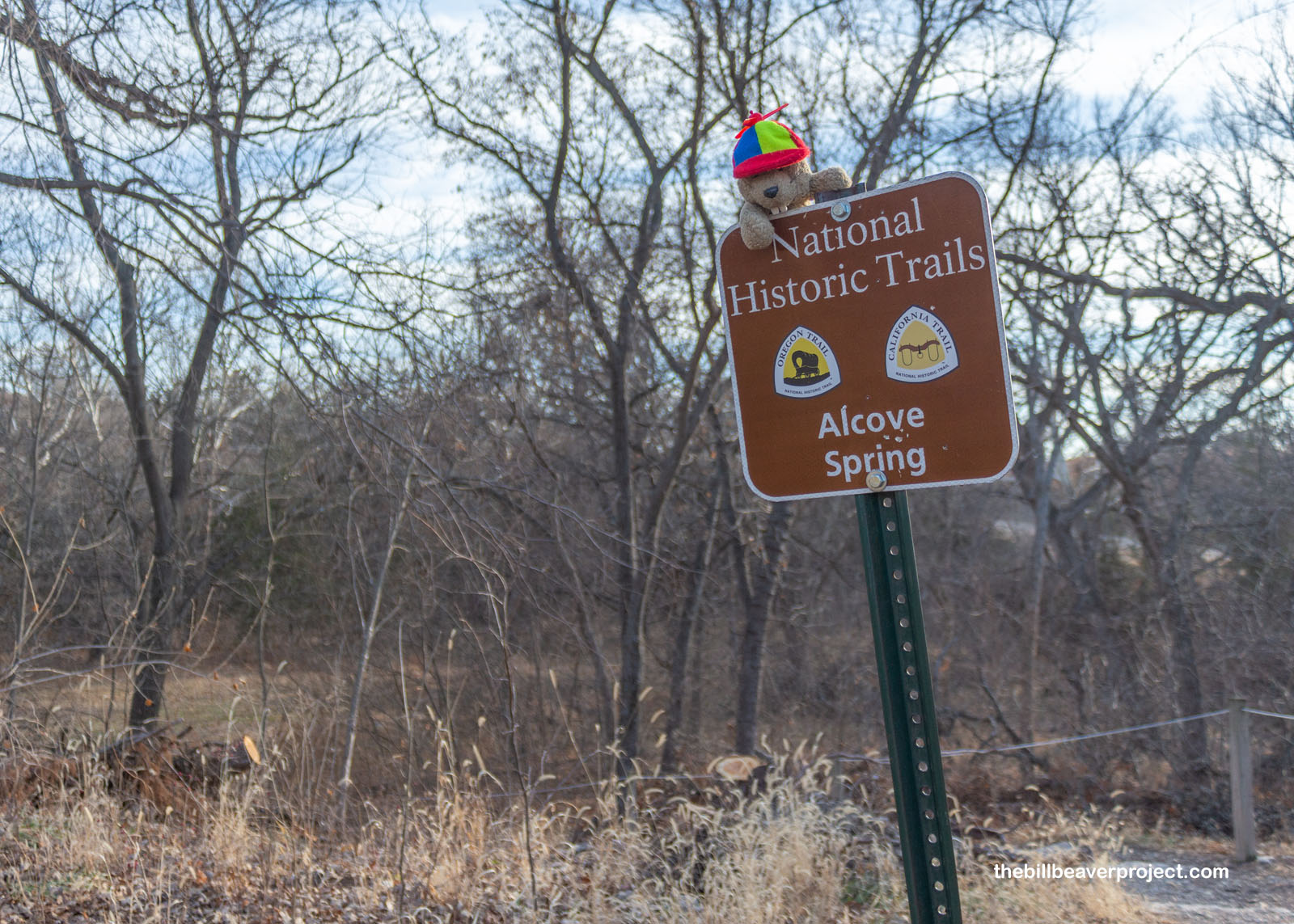 |
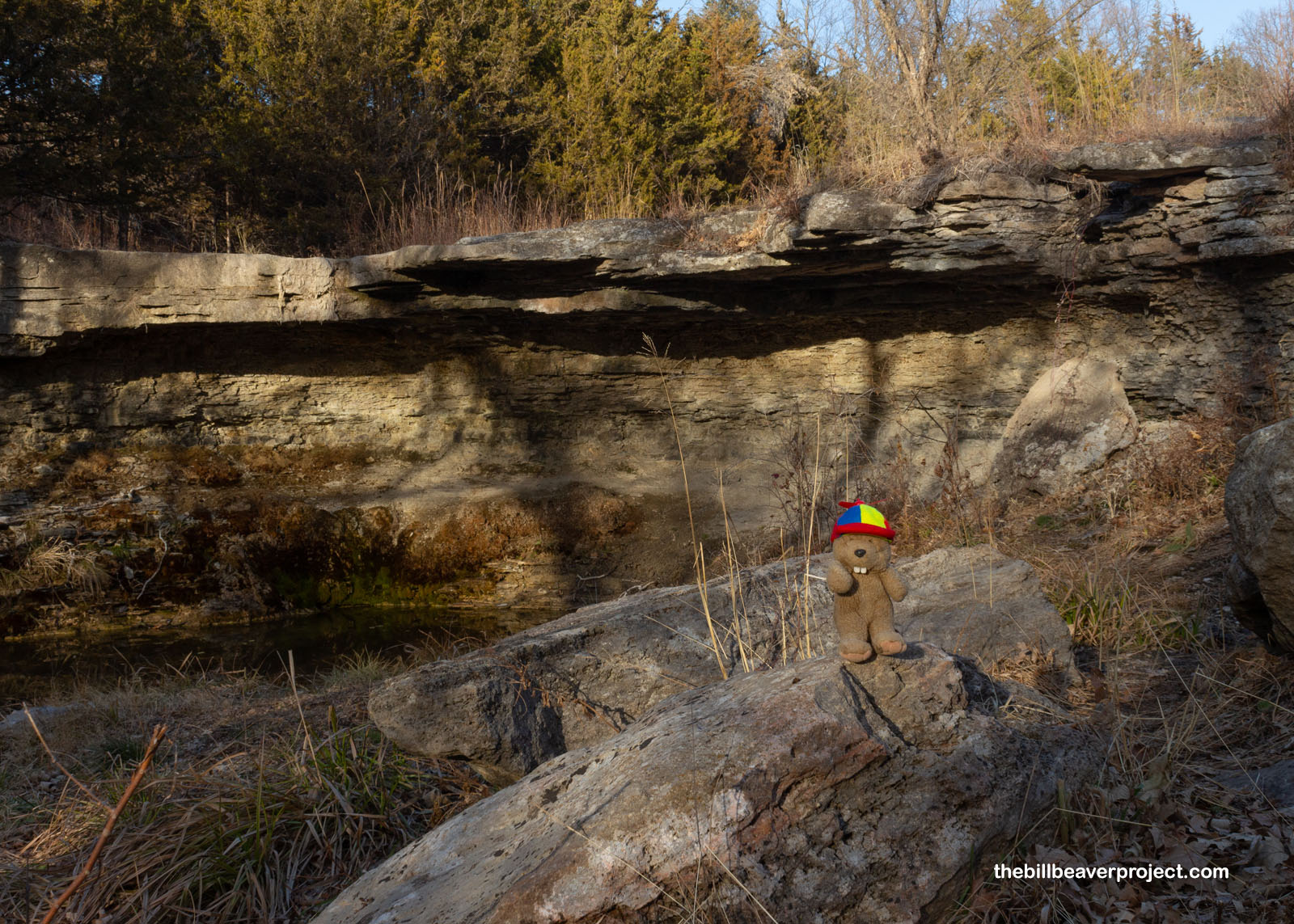 |
George McKinstry wrote the words “Alcove Spring” on the rock so future emigrants would know what the place was called, but those words have since weathered away! Some names are still visible on the surrounding rocks, though, like that of James Reed, leader of the Donner-Reed party and son-in-law of Mrs. Keyes!
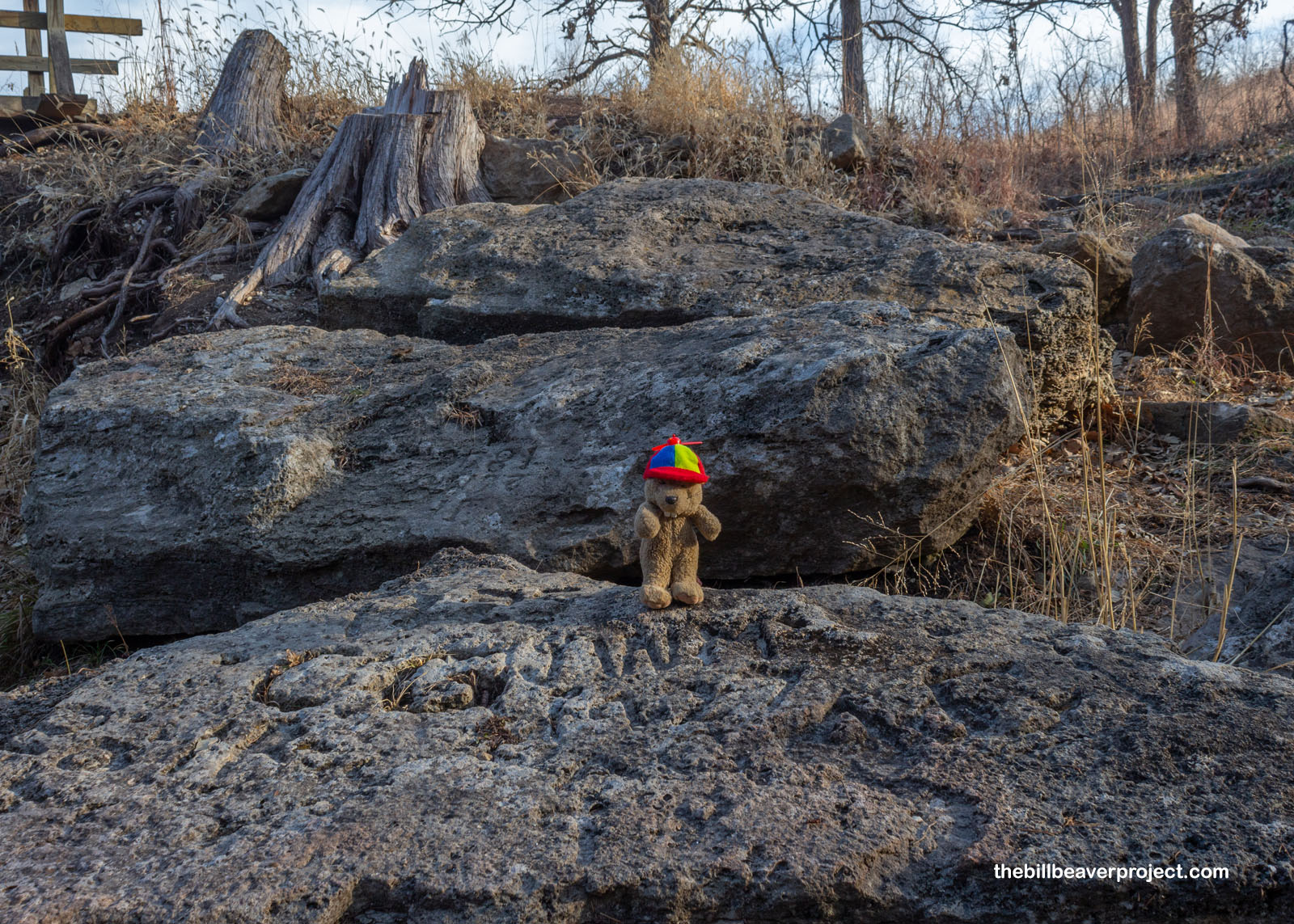 |
Not every westbound party made it to Oregon, though. Nine years after the Donner-Reed Party, Congress passed the Kansas-Nebraska Act, opening up Kansas and Nebraska territories for settlement and effectively repealing the Missouri Compromise! It was the opening of this territory that led to the “Bleeding Kansas” years and, in 1862, the first Homestead Act. This first of a series of acts meant to give land to individual farmers, rather than plantation owners, discouraging the spread of slavery. Before the sunset, I crossed state lines into Nebraska to see one of the first of these homesteads, now preserved as Homestead National Historical Park!
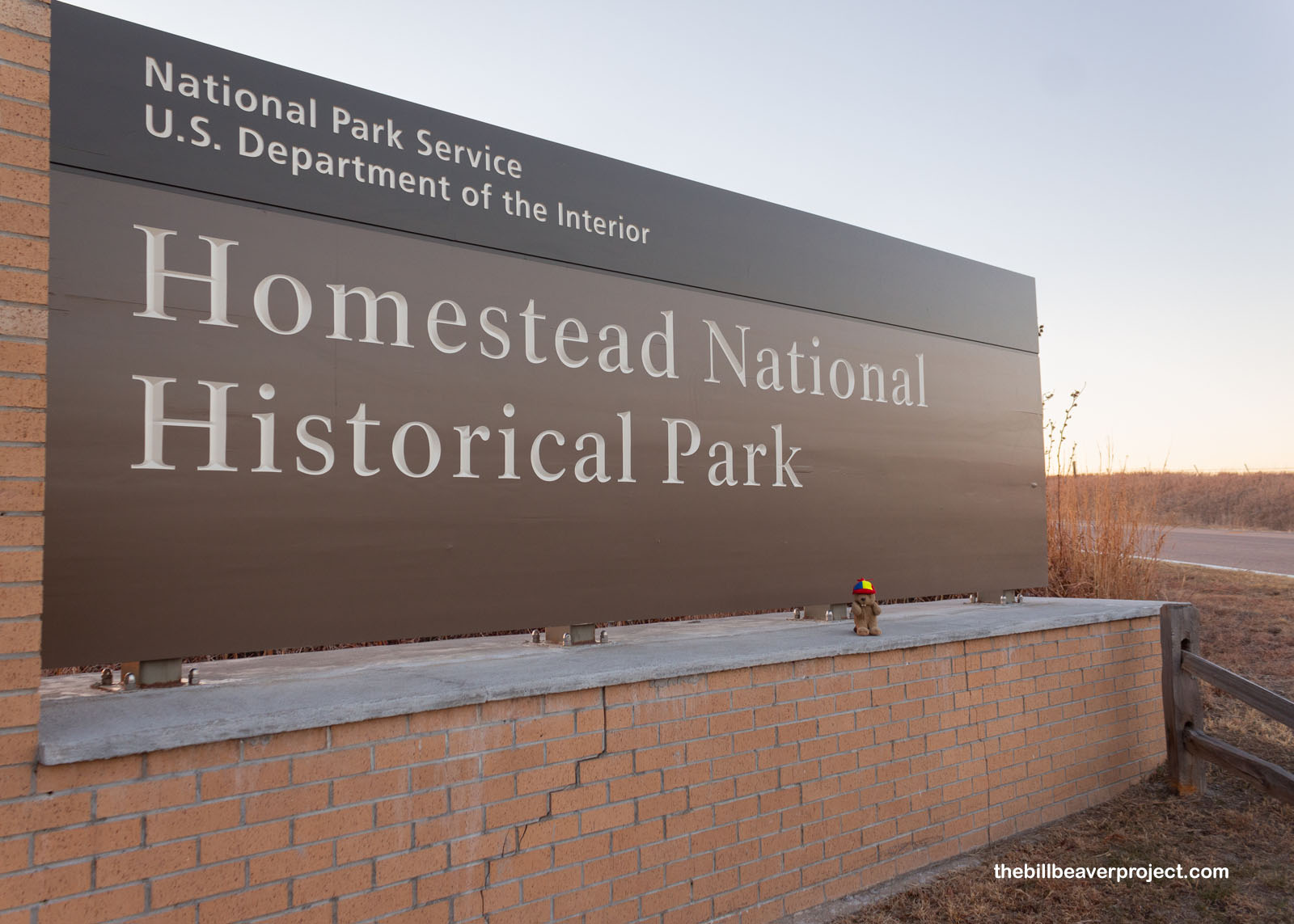 |
All in all, the Homestead Act of 1862 impacted 30 states and pre-states, amounting to 270 million acres! The criteria was that a homesteader had to live on the land, farm it, and build a home on it. Over here in California, 10% of the land was divided into homesteads, with 2,852 in Los Angeles County alone! Streets like Ivar and Harper got their names from local homesteaders, and aspiring wheat grower, Mr. Isaac Van Nuys, formed the San Fernando Farm Homestead Association!
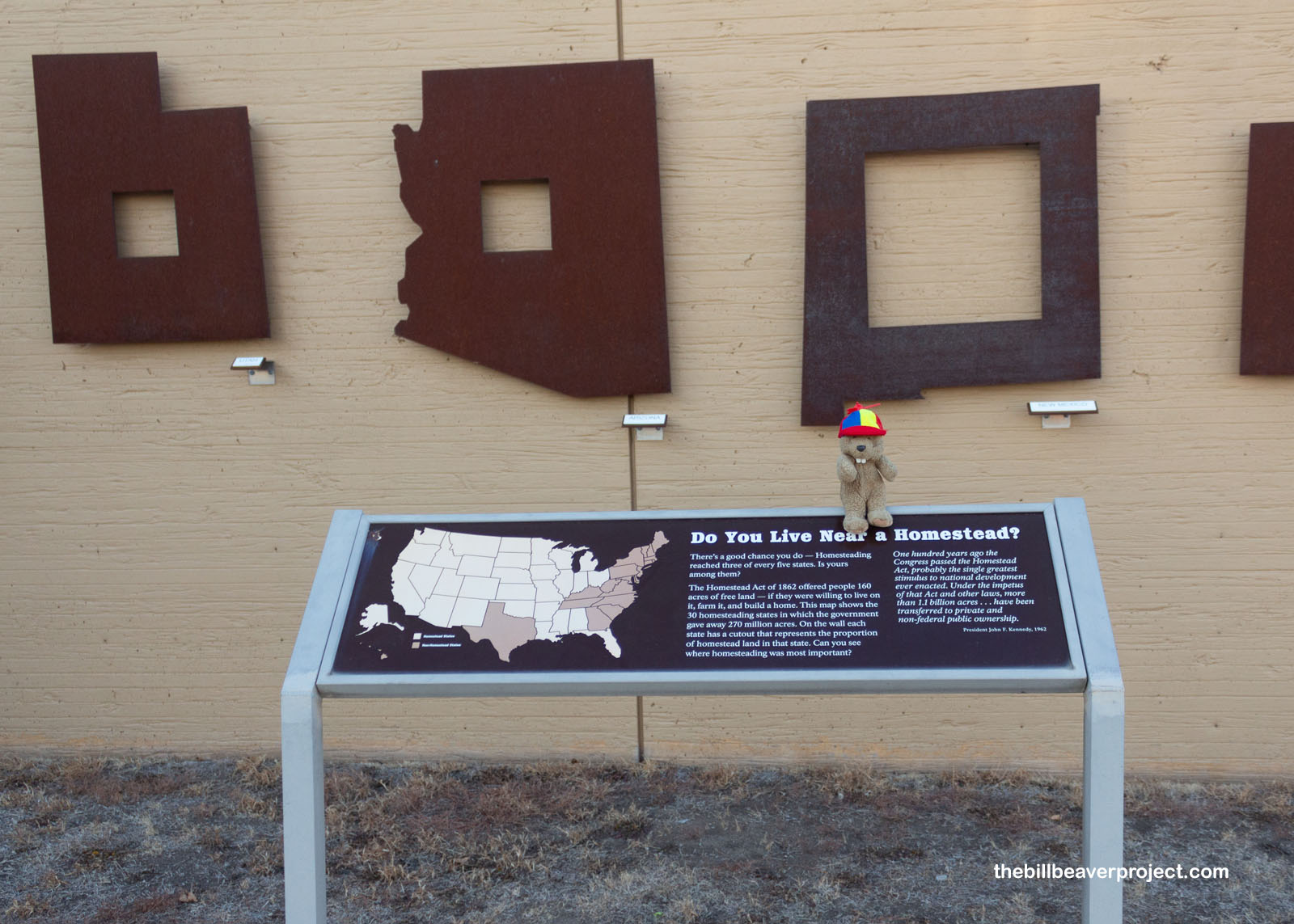 |
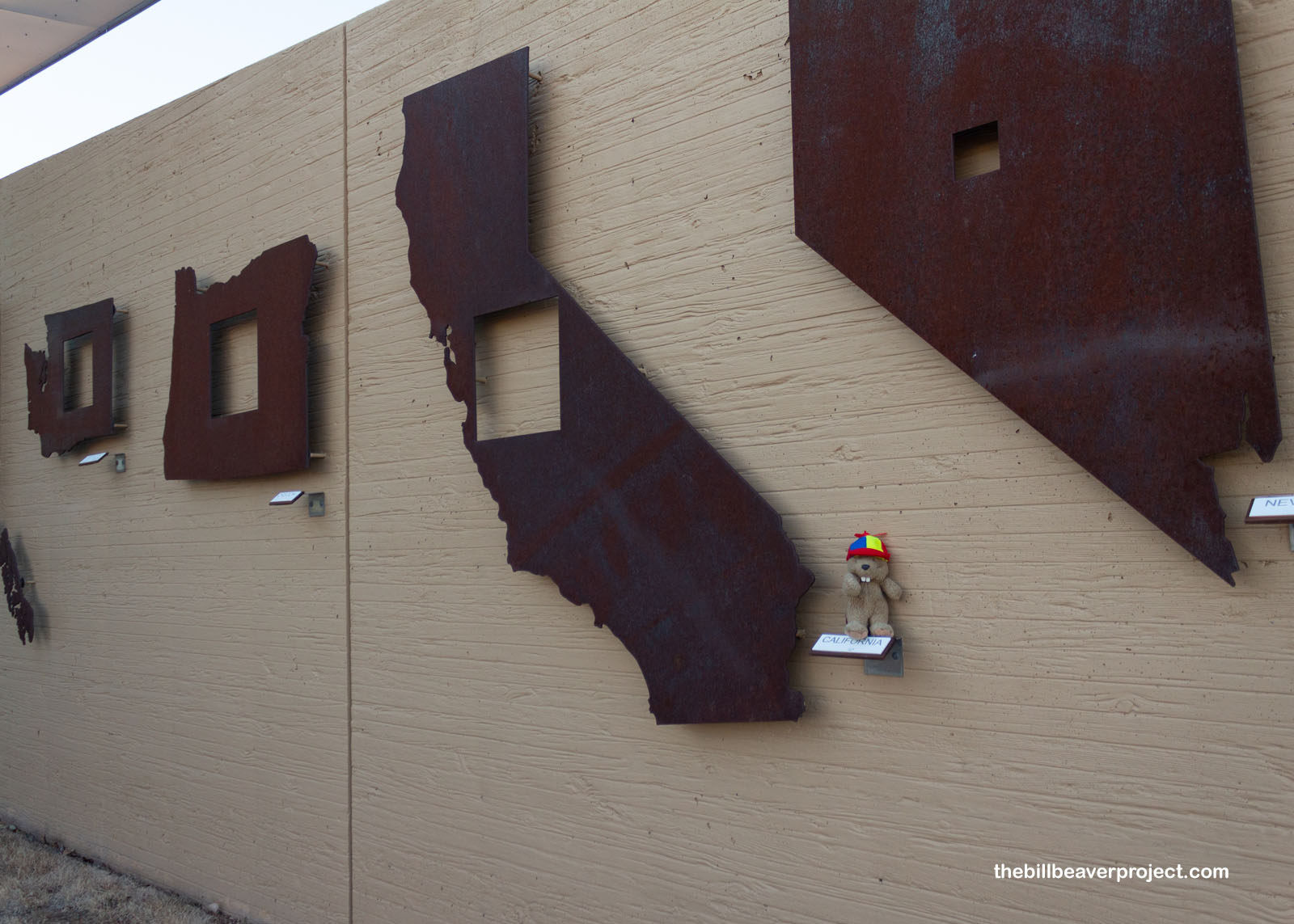 |
Downstairs displays talked about the homesteader who owned what’s now this national park site: Daniel Freeman! He was one of the very first to file a land patent claim, which he did just after midnight on January 1, 1863 while he was heading off to report for duty in the Union Army! In fact, because of the impending Civil War and the secession of slave states, it was easier to pass the Homestead Act because the issue of new slave territory was off the table!
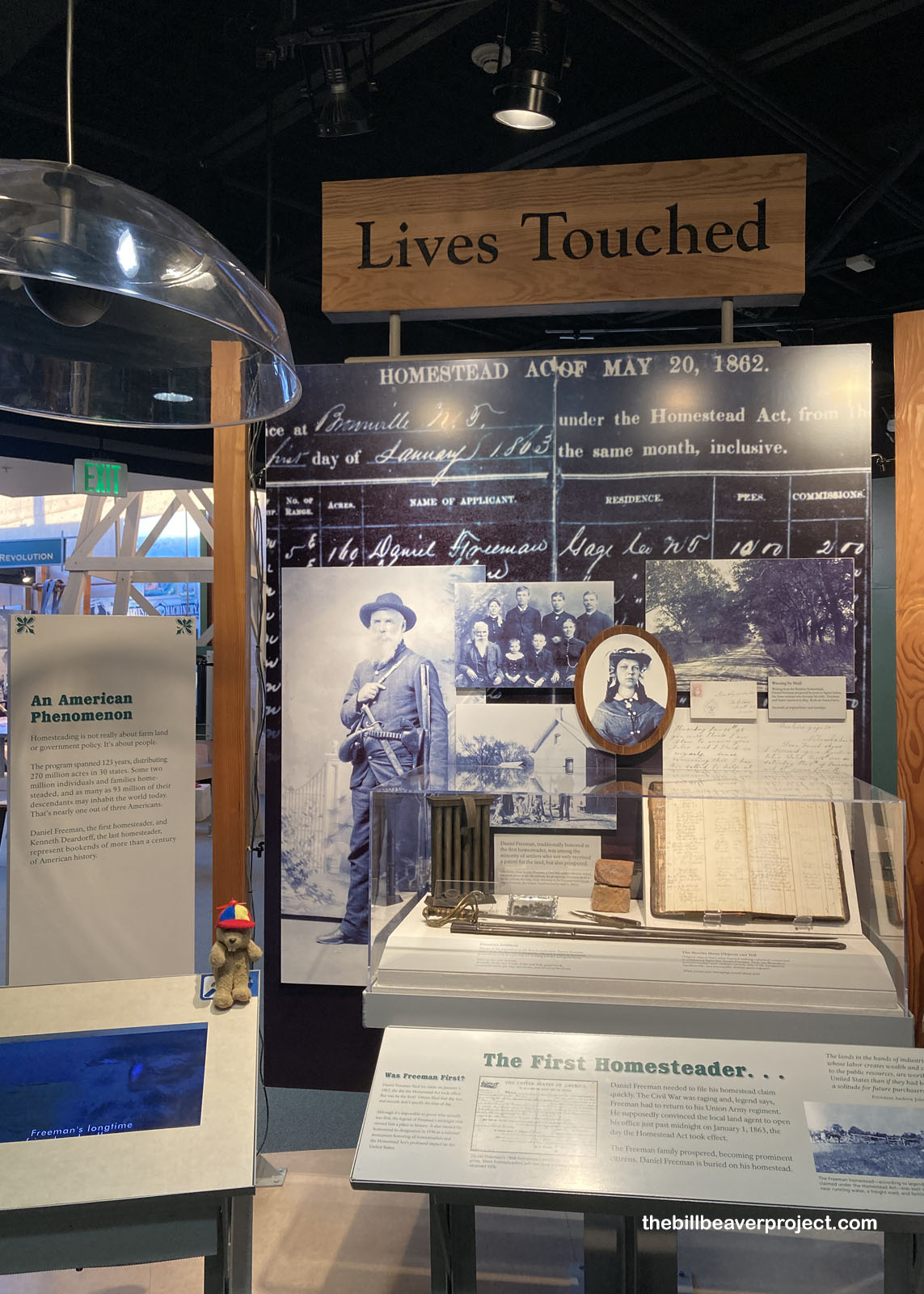 |
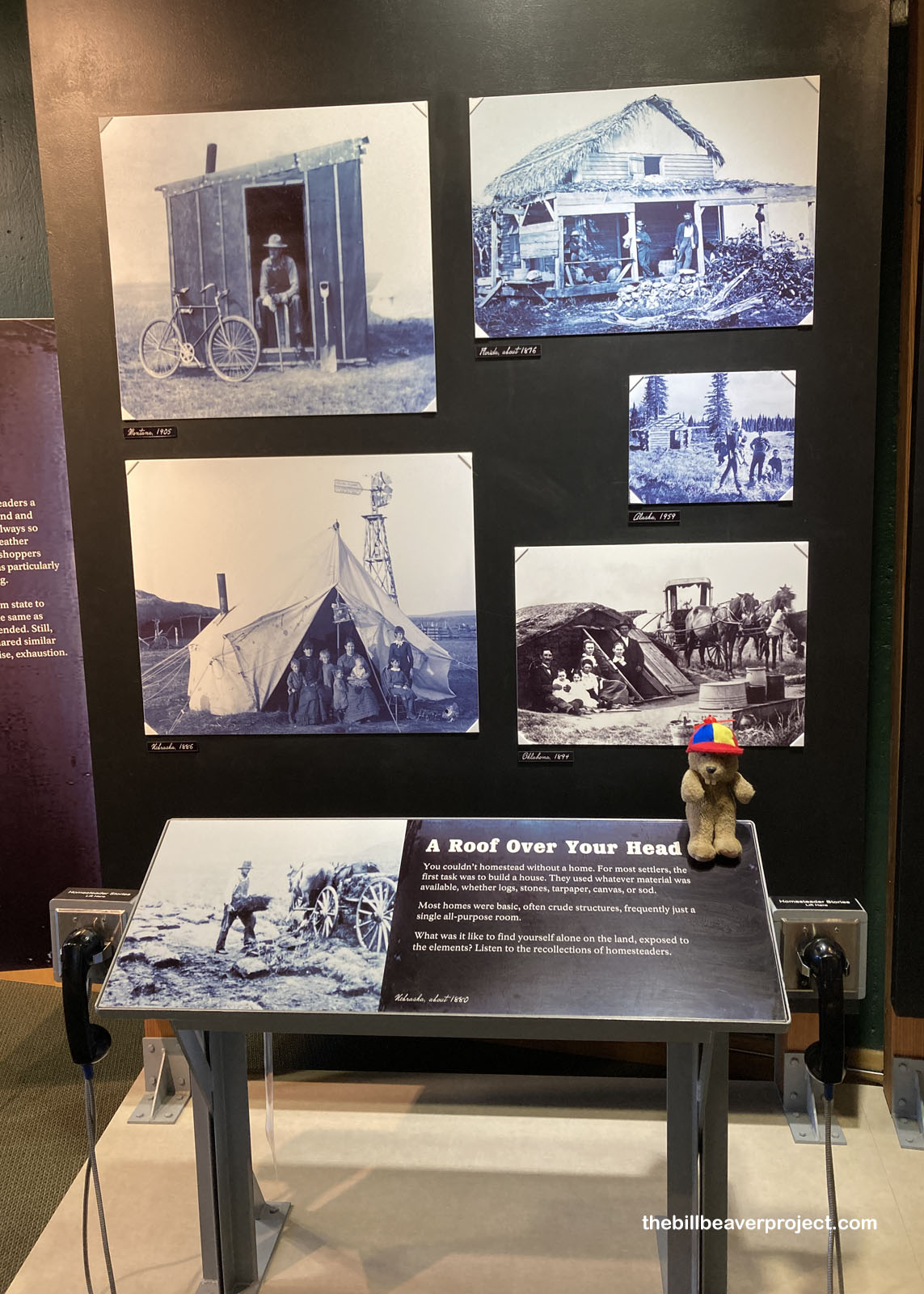 |
As more and more folks followed in Mr. Freeman’s footsteps, the Plains filled up with 160-acre homesteads, each would-be homesteader trying new and innovative ways to shelter their families and turn a profit. Newer technologies helped them out, like the wind-powered well pump, invented in 1854, and tractors and threshing engines powered by steam! That didn’t stop some from getting really creative, like the example of a goat-powered treadmill that churned butter!
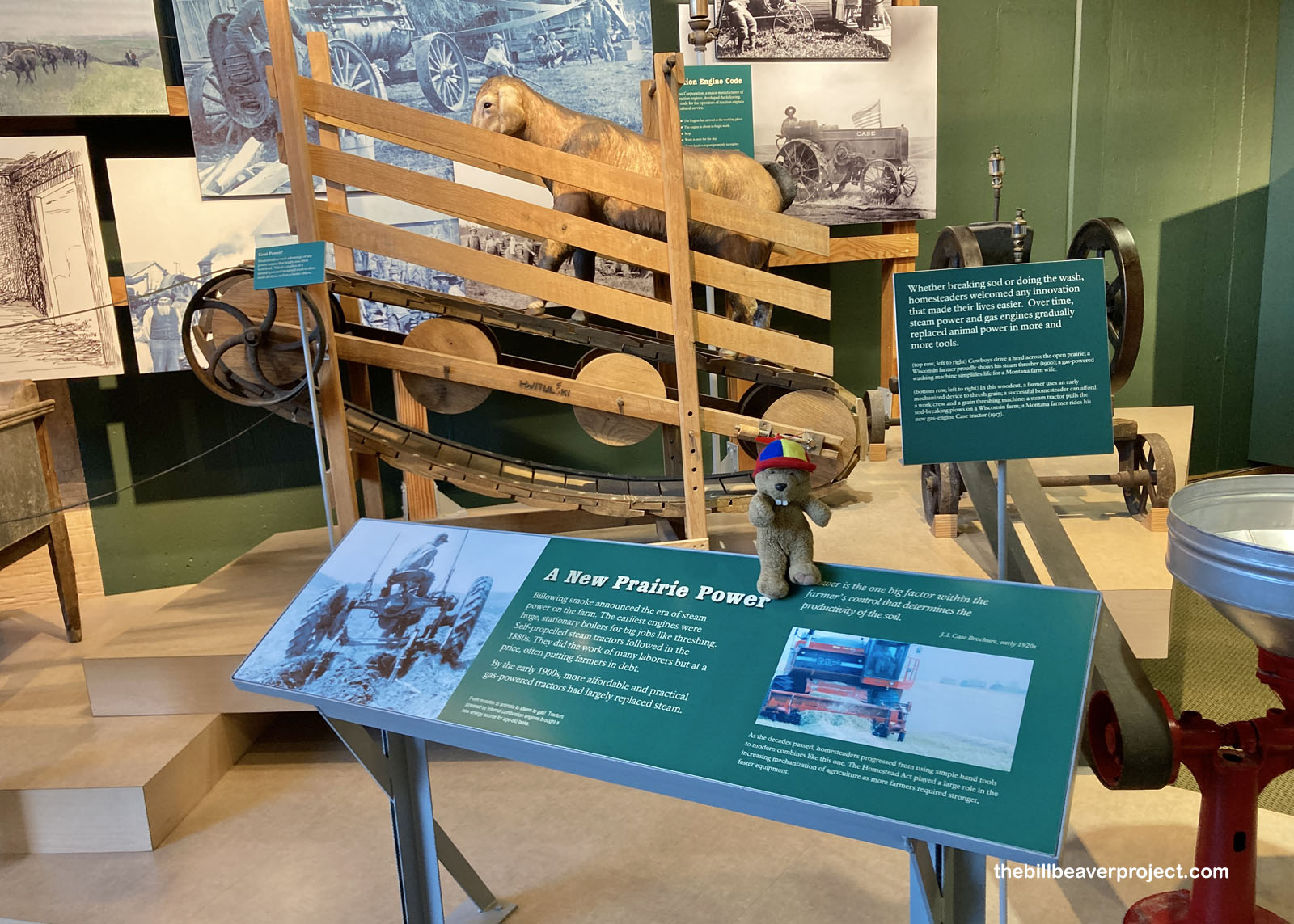 |
All of this allocation and compartmentalization radically changed the Great Plains! The natural prairies all but disappeared, as did the first folks, many of whom had already been relocated to reservations. Then the US Government decided that Native folks needed to be homesteaders too, passing the Dawes Act in 1887. This act was designed to break up tribes into nuclear families. Their eligibility for owning land depended on how much Native blood they had and how willing they were to adopt a European inspired lifestyle. In its first 13 years, the Dawes Act reallocated 72 million acres of Native land to small farmers!
 |
Where there had been painted buffalo hides and regalia, there were now quilts on the prairies. The historical park had lots of traditional patterns on display around the grounds, like the friendship star, a four-point design that was usually stitched onto gift quilts and signed with the giver’s name!
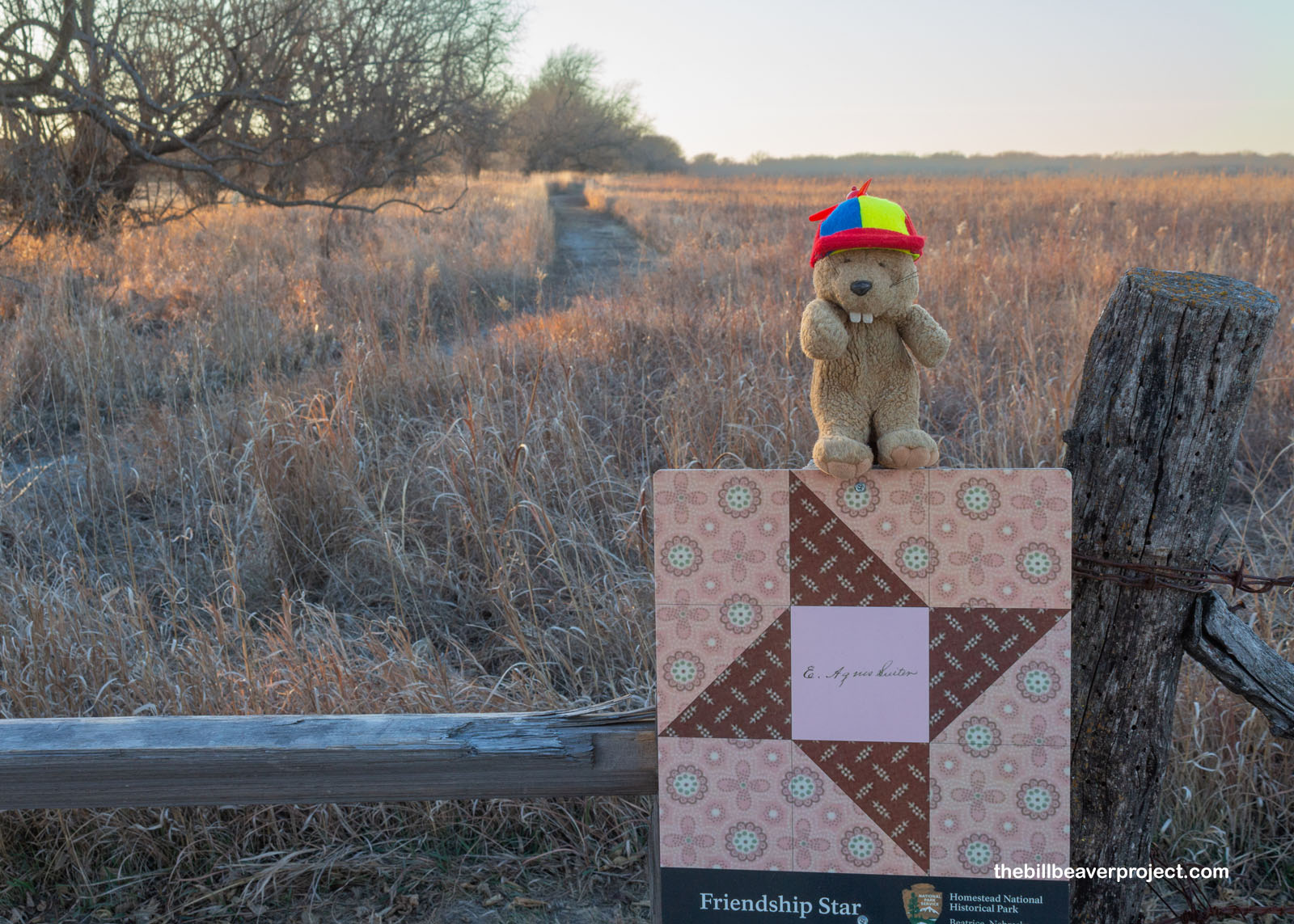 |
And so the Plains changed from native grasses to grains, especially wheat and corn! The soil was turned up by John Deere’s steel plow blades (1837), and properties were separated by Joseph Glidden’s 1873 invention, barbed wire! These techniques ultimately led to greater crop production to feed cities that were growing faster and faster, but also destroyed the moisture-locking topsoil, which led to the Dust Bowl of the 1930s!
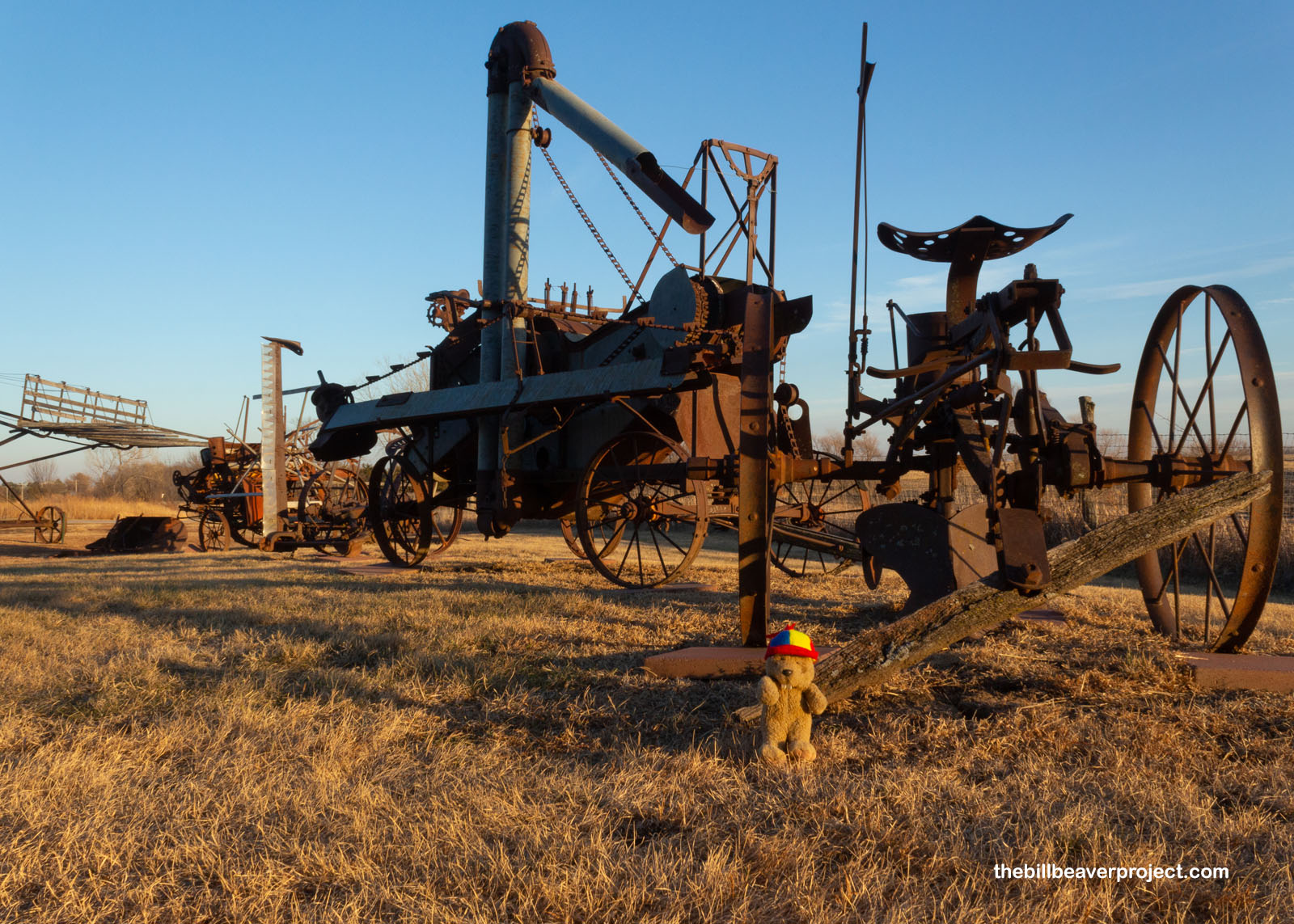 |
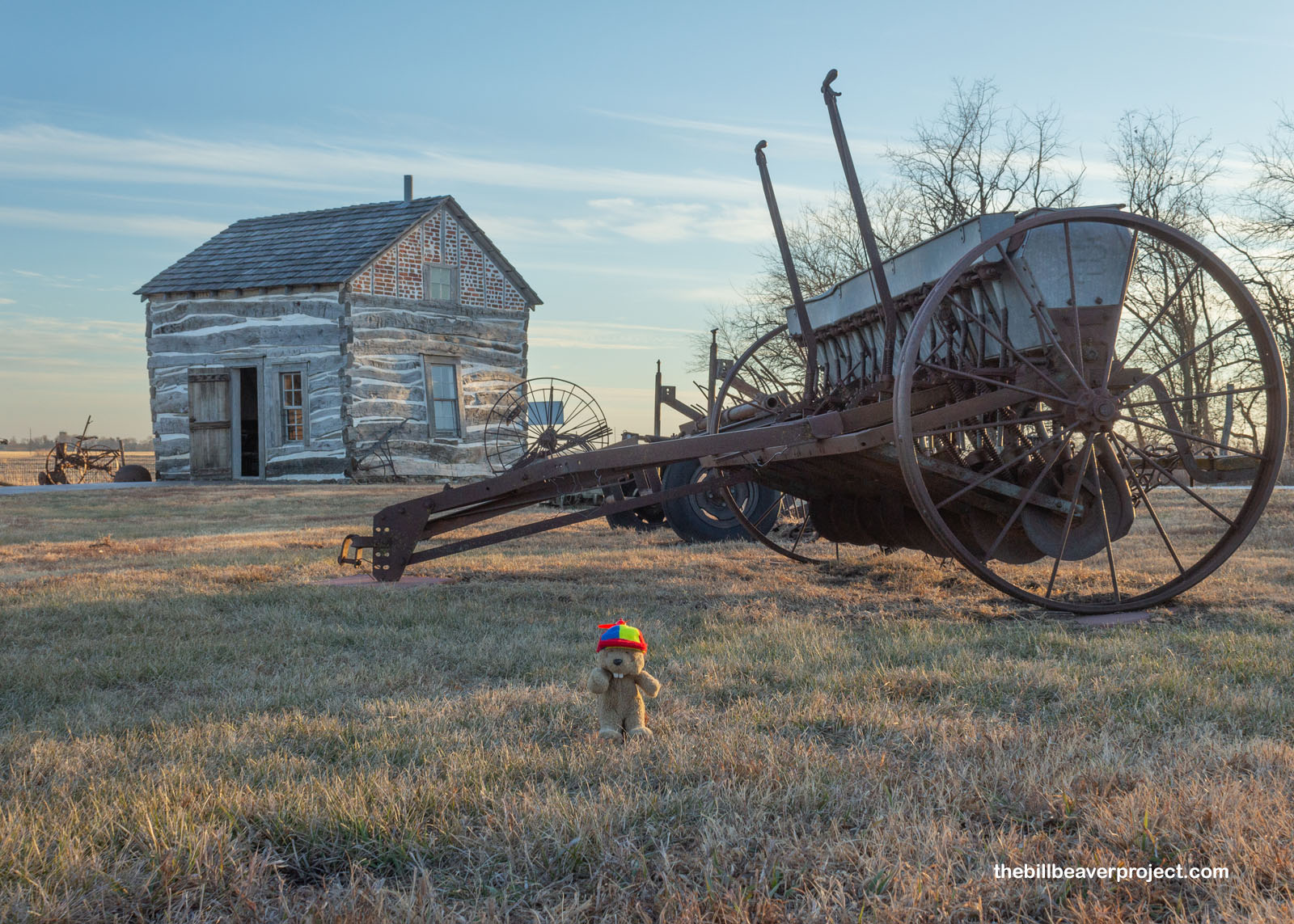 |
While the original Freeman home no longer stands here, the park acquired the log cabin of a neighboring homesteader, Mr. George Palmer, in 1950, and it’s still standing here as an example of one of the nicer homes of these early farms.
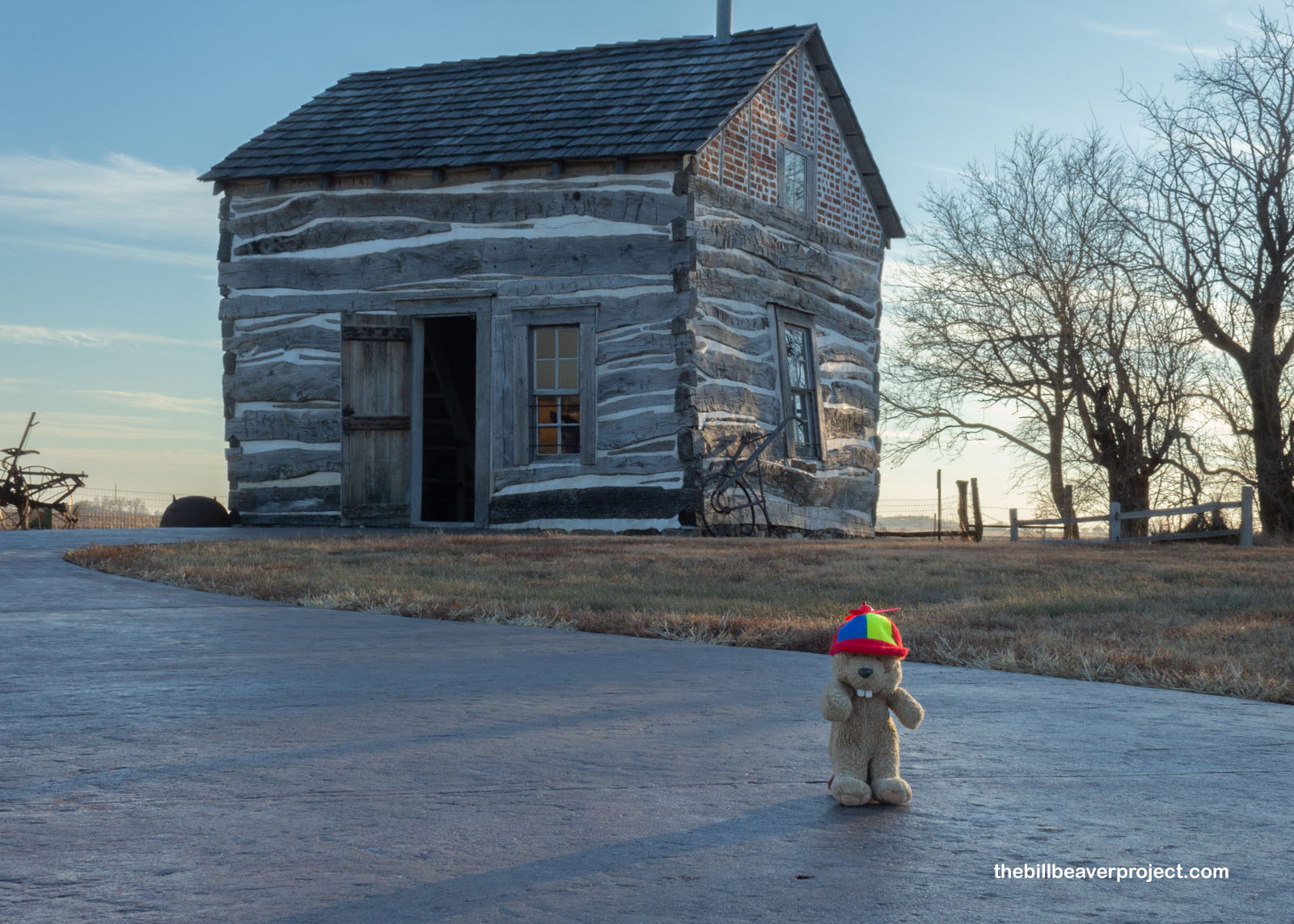 |
It may have been bigger than a sod house, but this little cabin was no mansion. George and Mary Ann Palmer raised 10 kids in this 14’x16′ room on the prairie! The property passed down to Lawrence and Ida Mumford Epard, who lived in this little cabin for nearly 40 years!
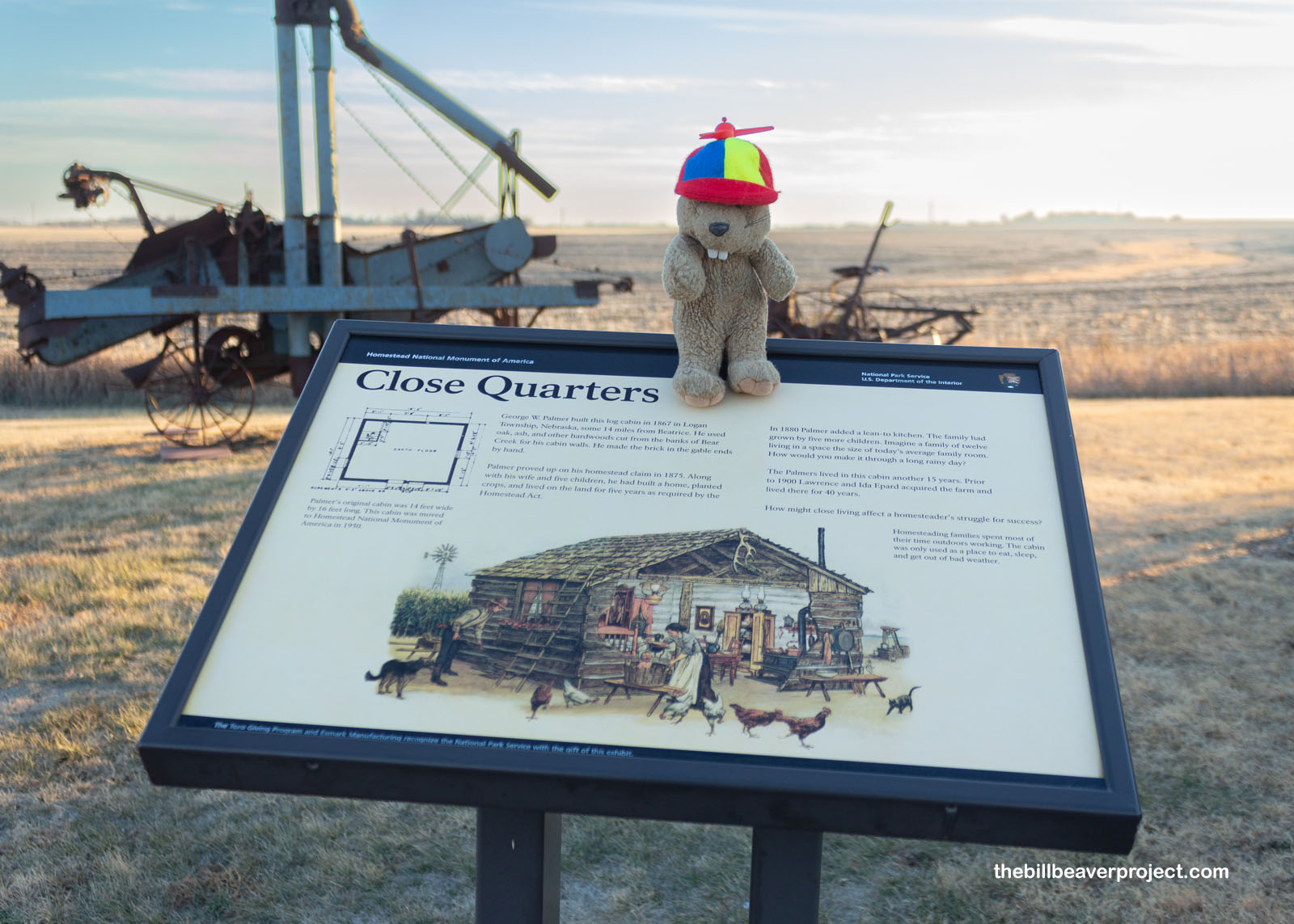 |
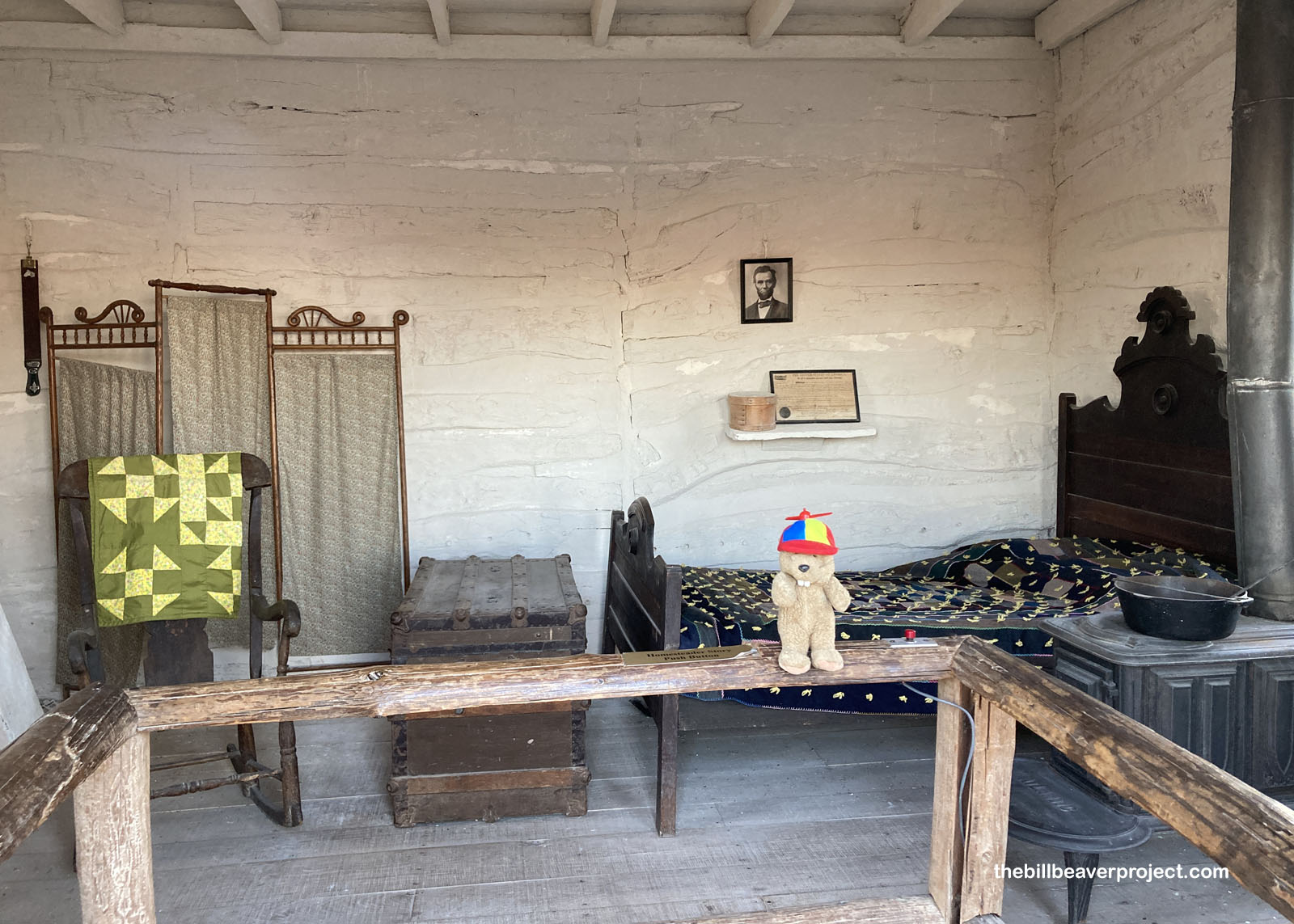 |
But then sunset happened! After all, the Solstice is less than a month away! So I bid farewell to the homestead and finished my long day’s journey into night in front of another Midwestern capitol: Nebraska’s in the heart of Lincoln! It was really, really cold by now, but I enjoyed taking in the sight of this unique capitol building, built super tall like North Dakota’s and designed by Bertram Grosvenor Goodhue, the same architect responsible for the Los Angeles Public Library downtown!
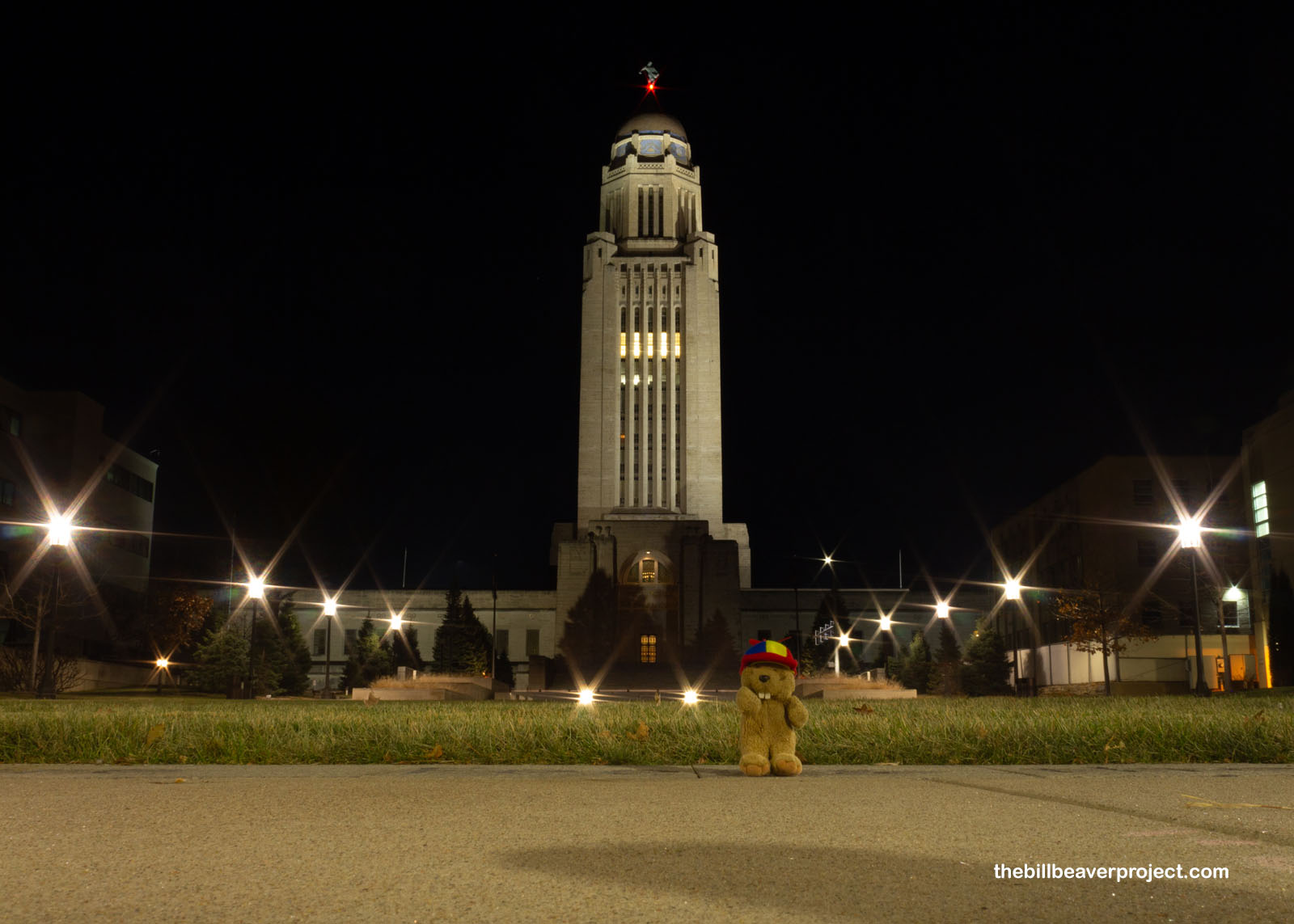 |
And then, I realized how much I’d packed into so short a day! It was a real cyclone of adventure, and I thought at any minute I’d just wake up after a wild technicolor dream! Instead of waking up, though, I wrapped up in Omaha, home of the Wizard himself, and prepared for another day full of Heartland exploration!
Keep on down the road!

 More 2022 Adventures |
Total Ground Covered: 308.0 mi (495.7 km) |
 Next Day |
